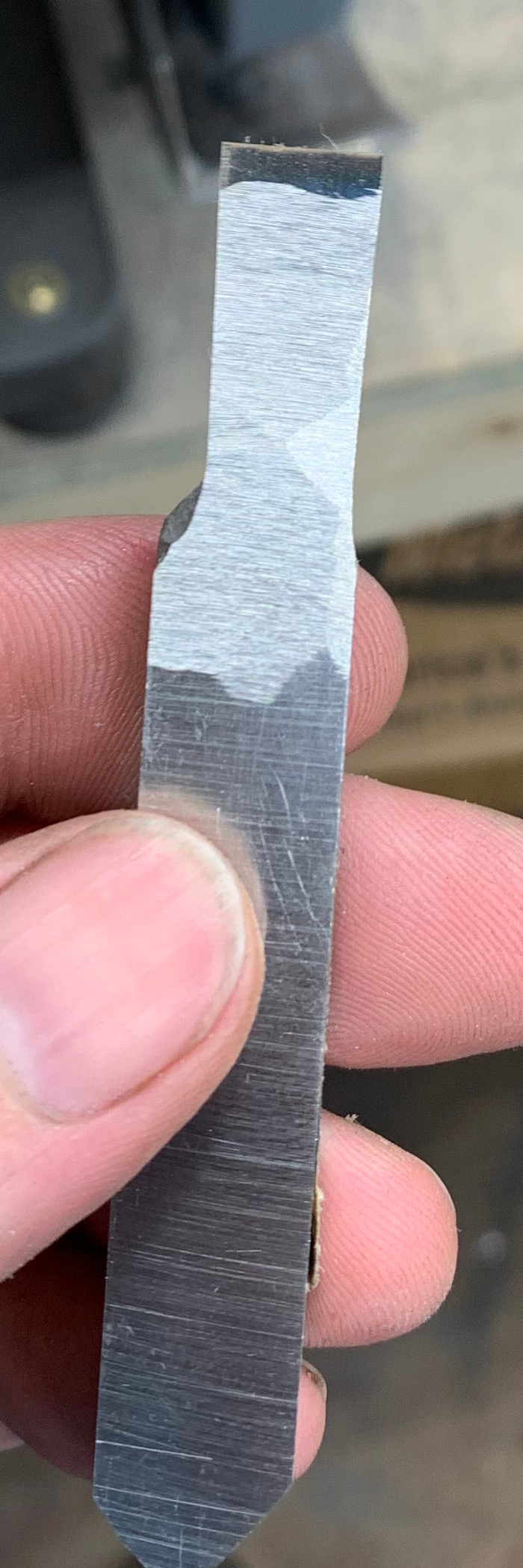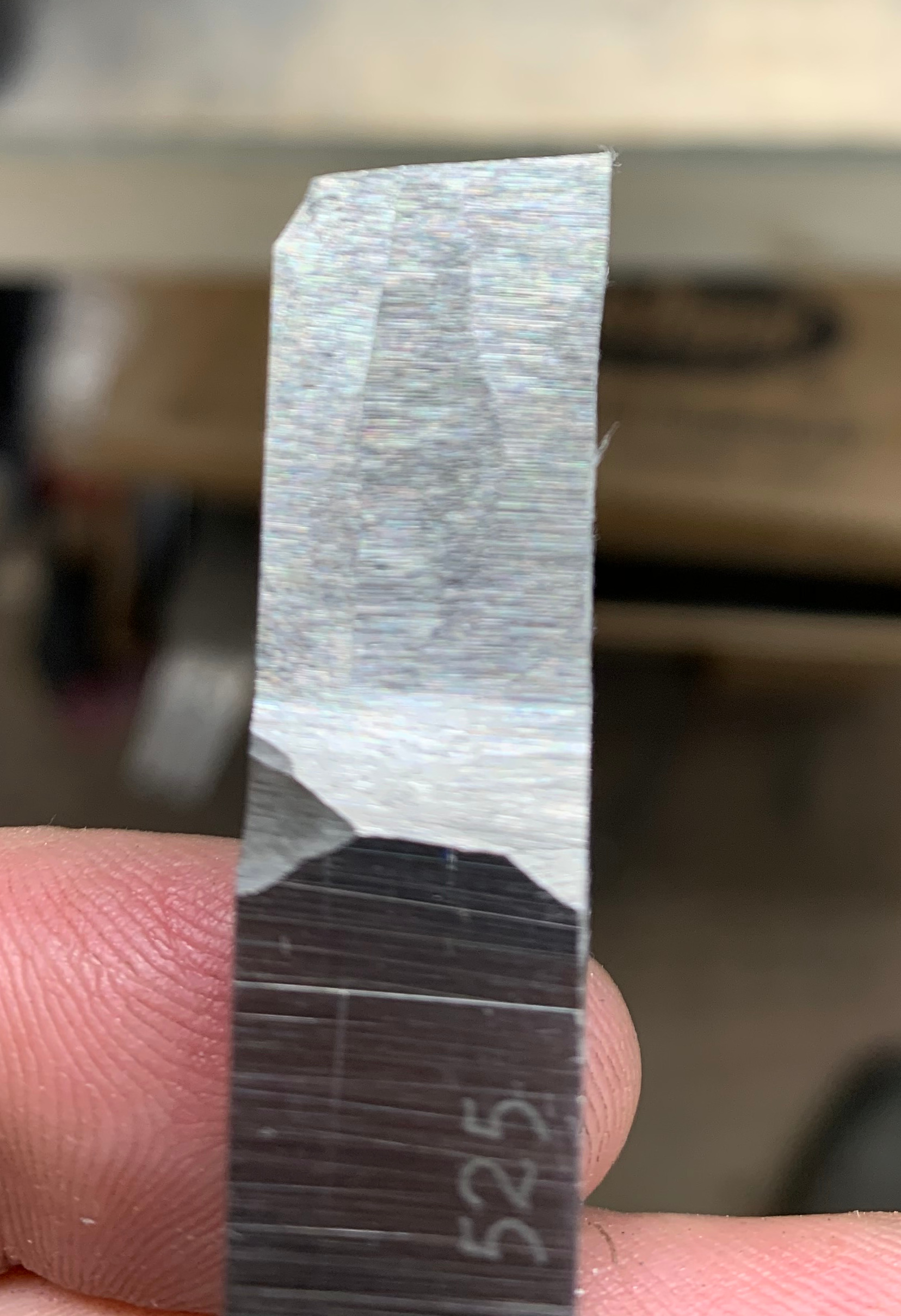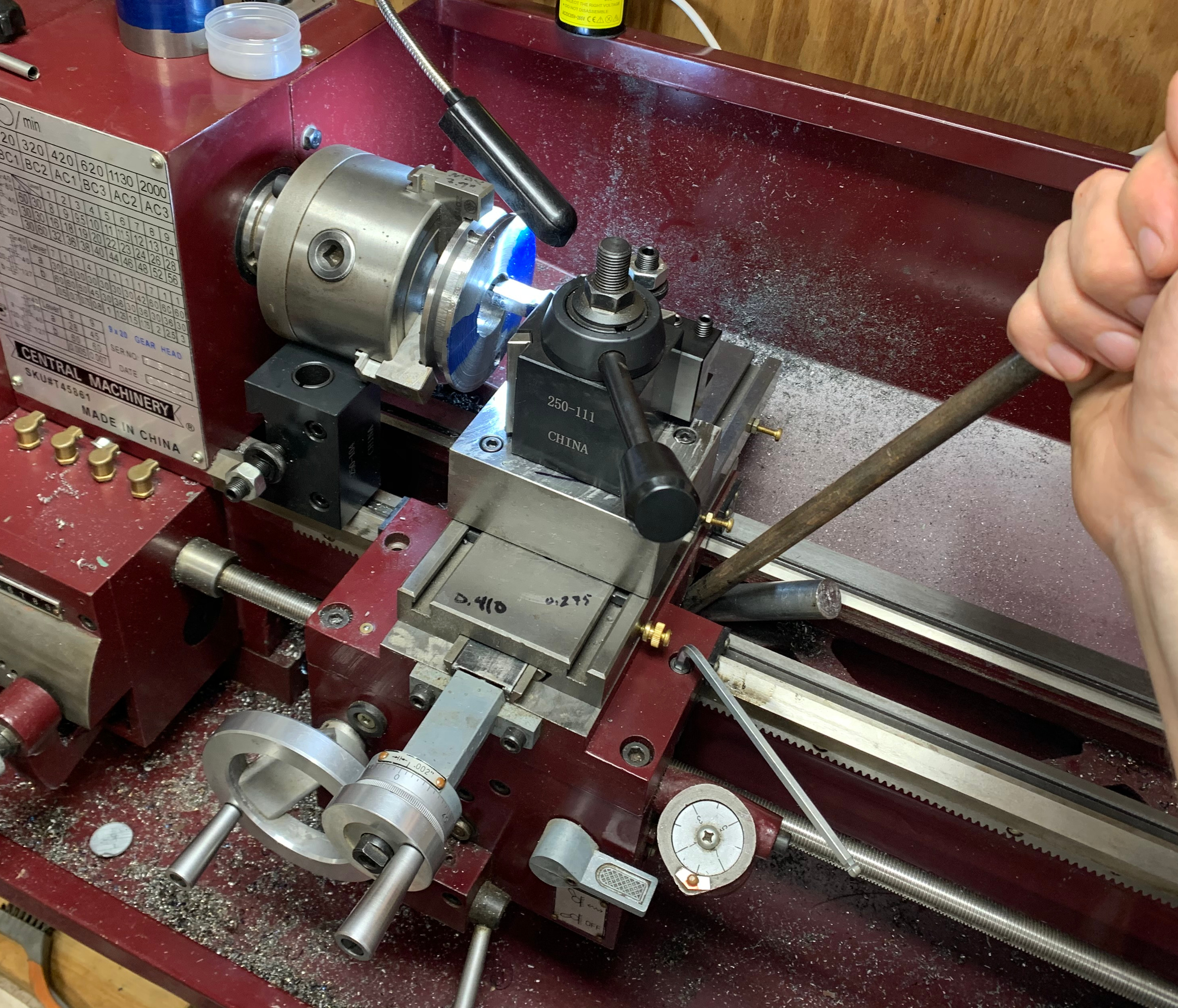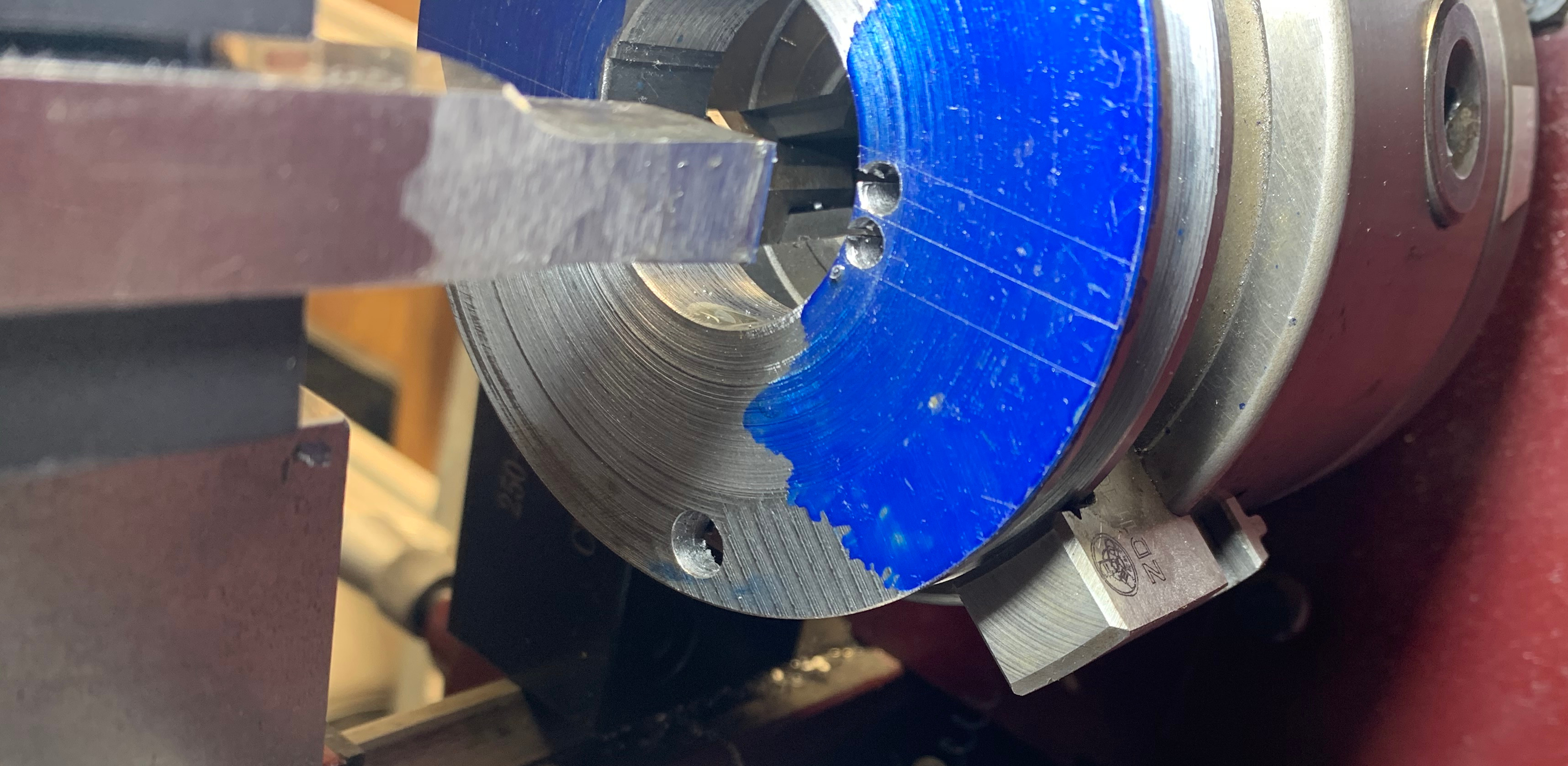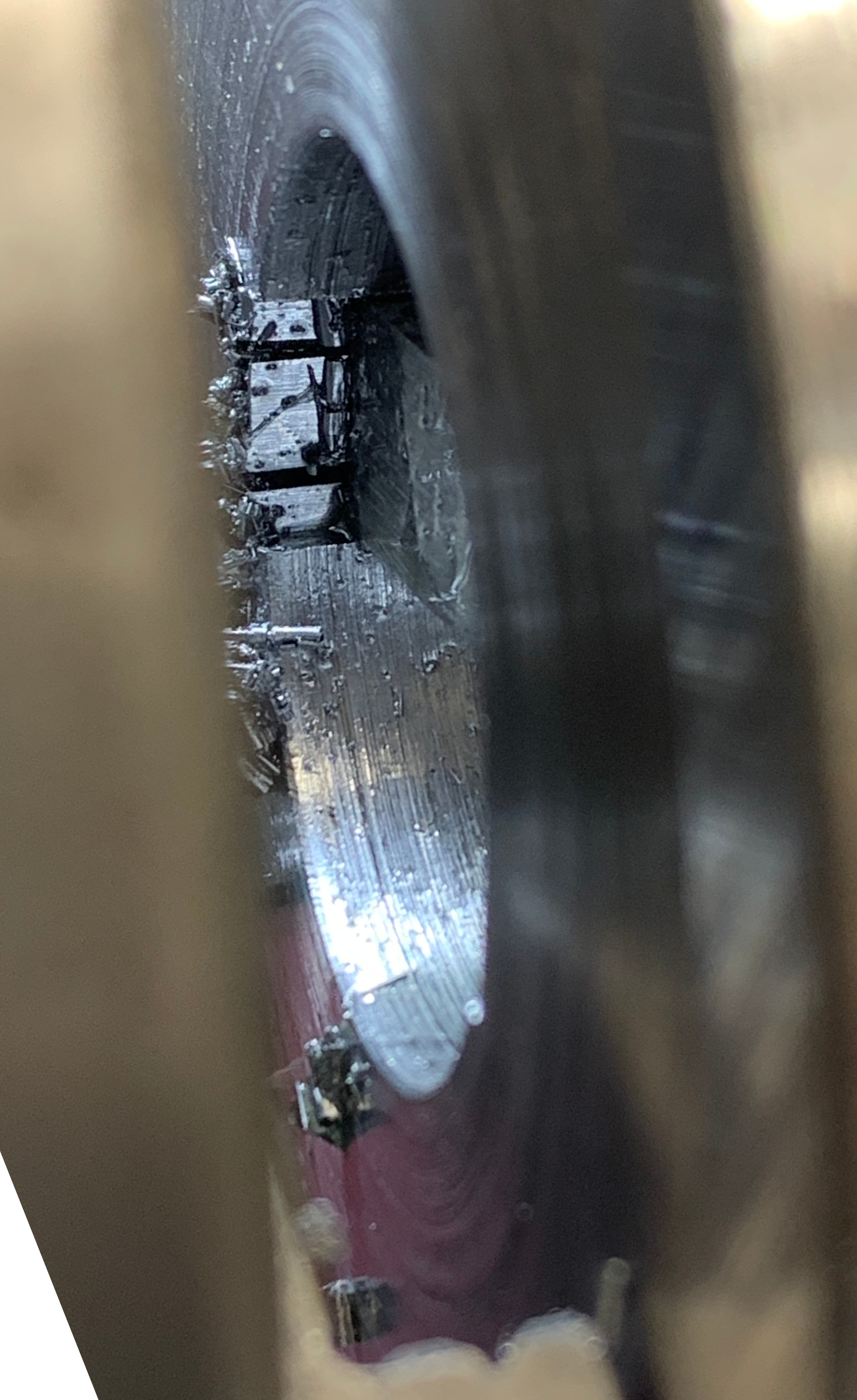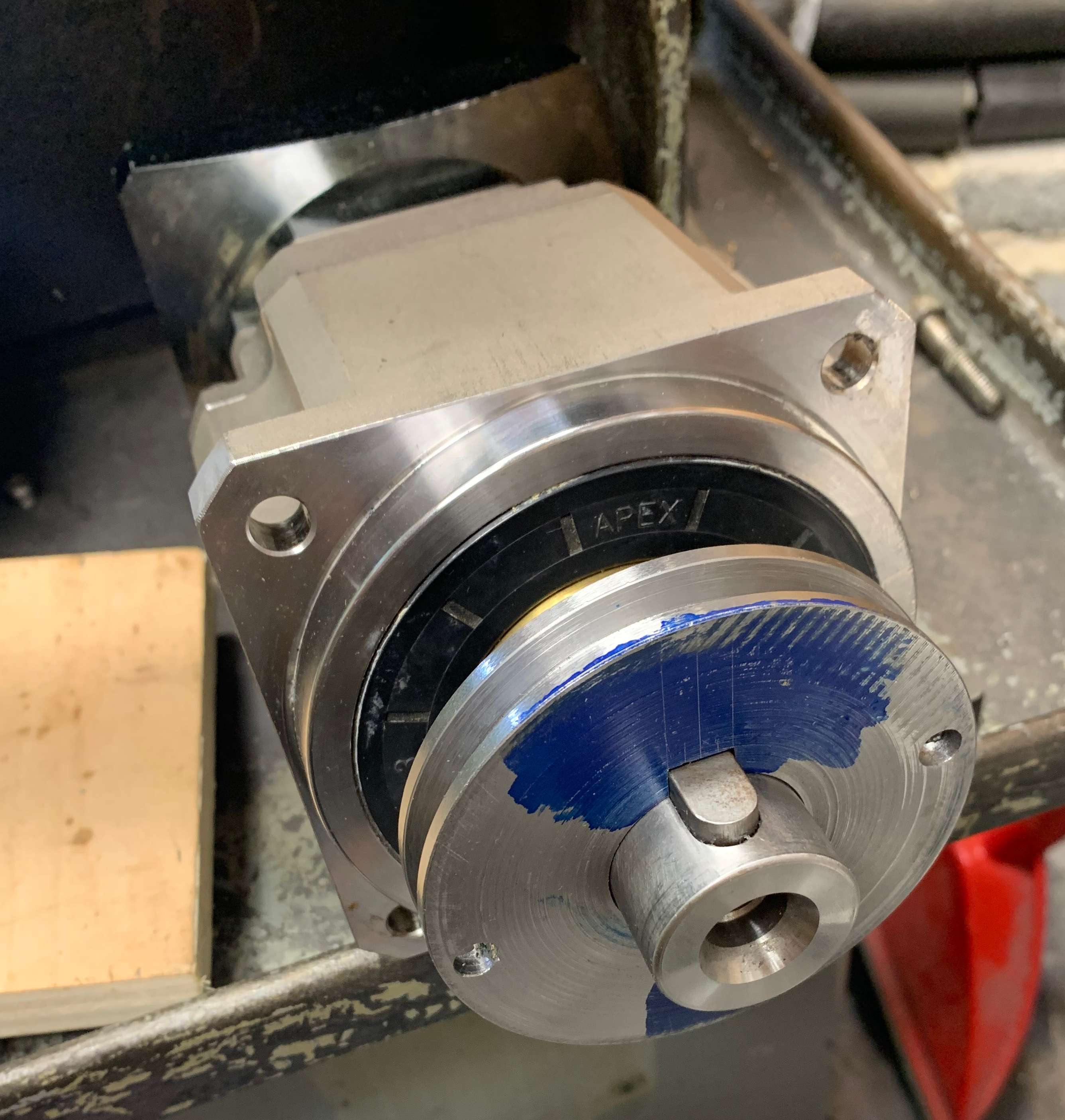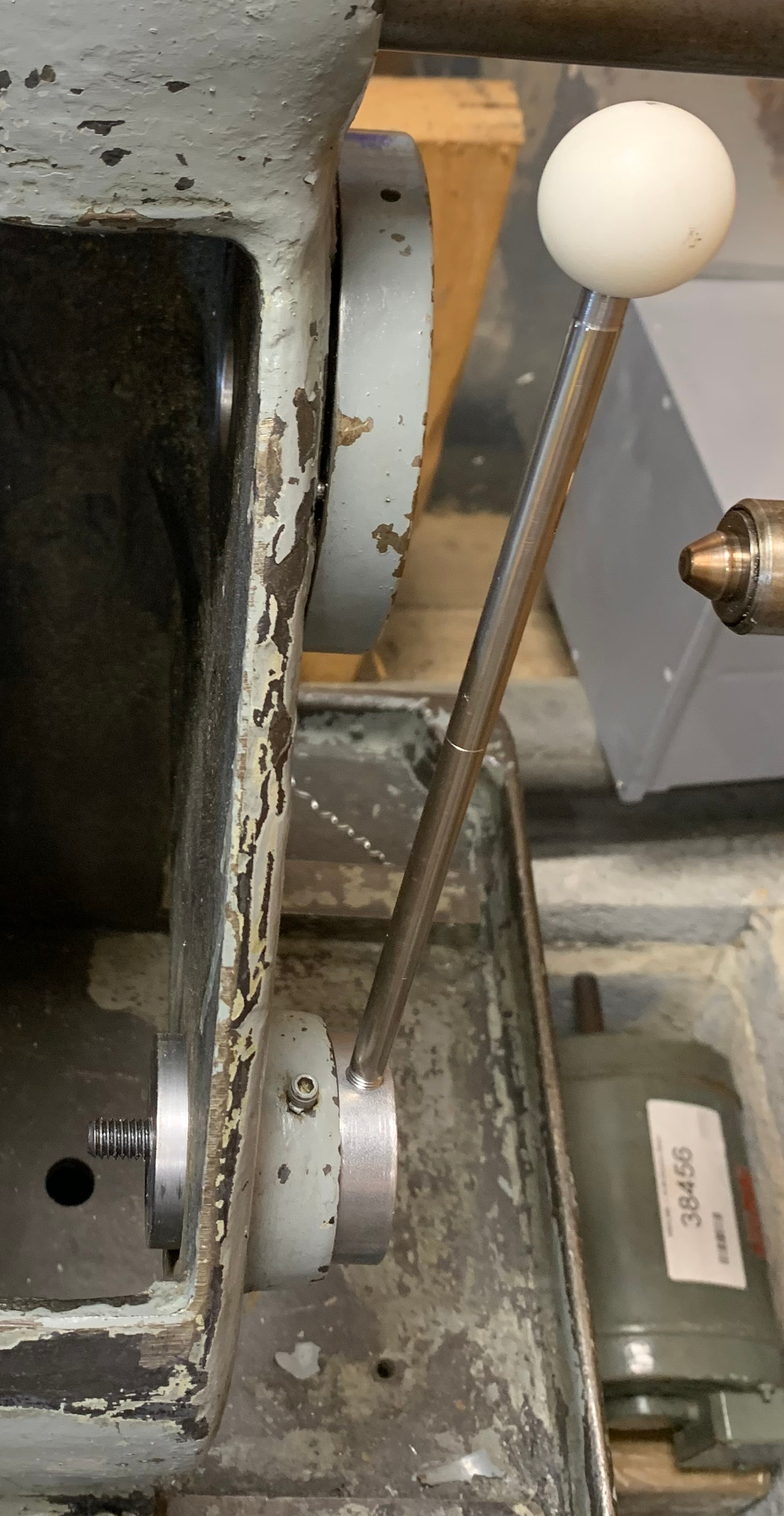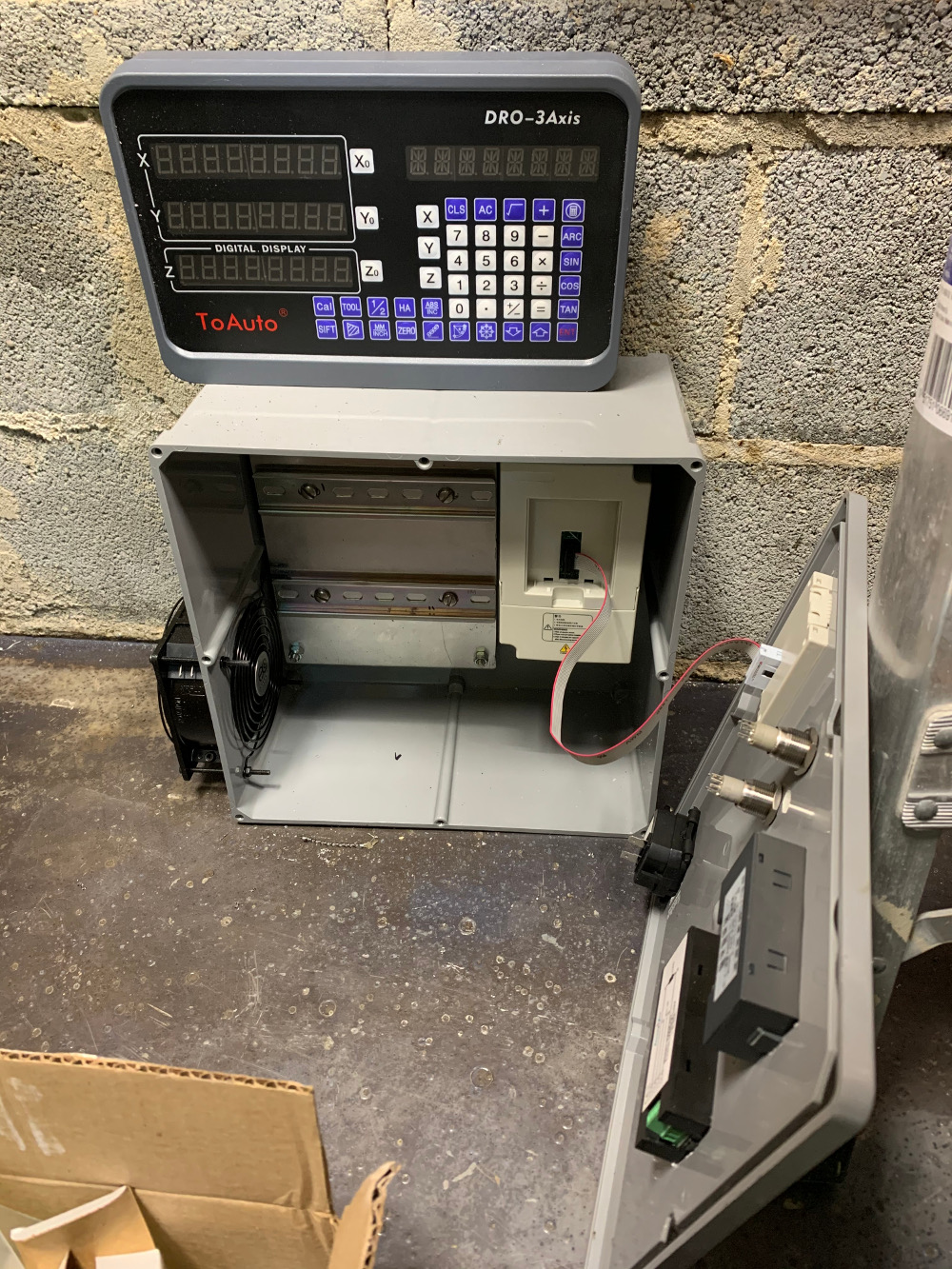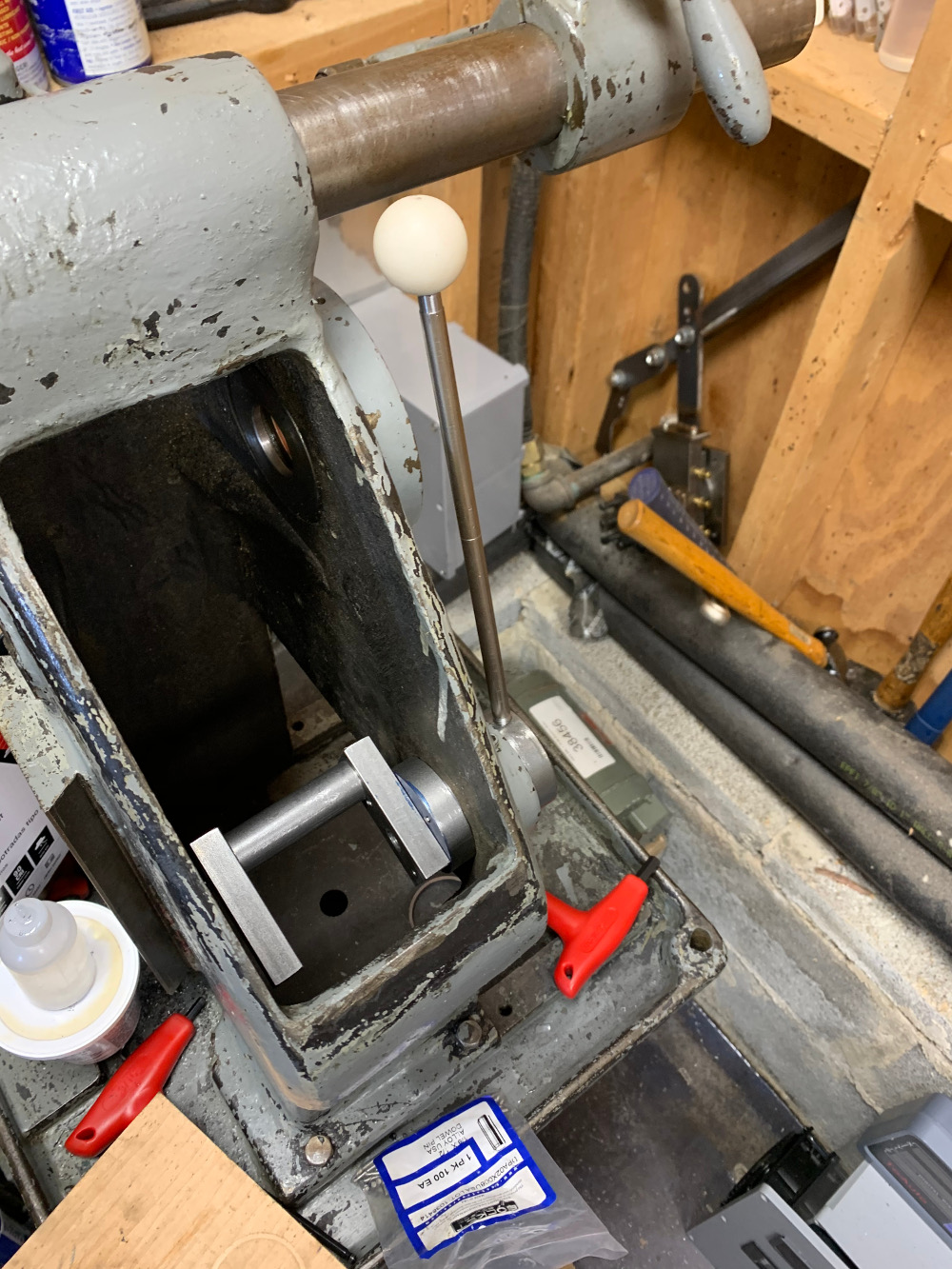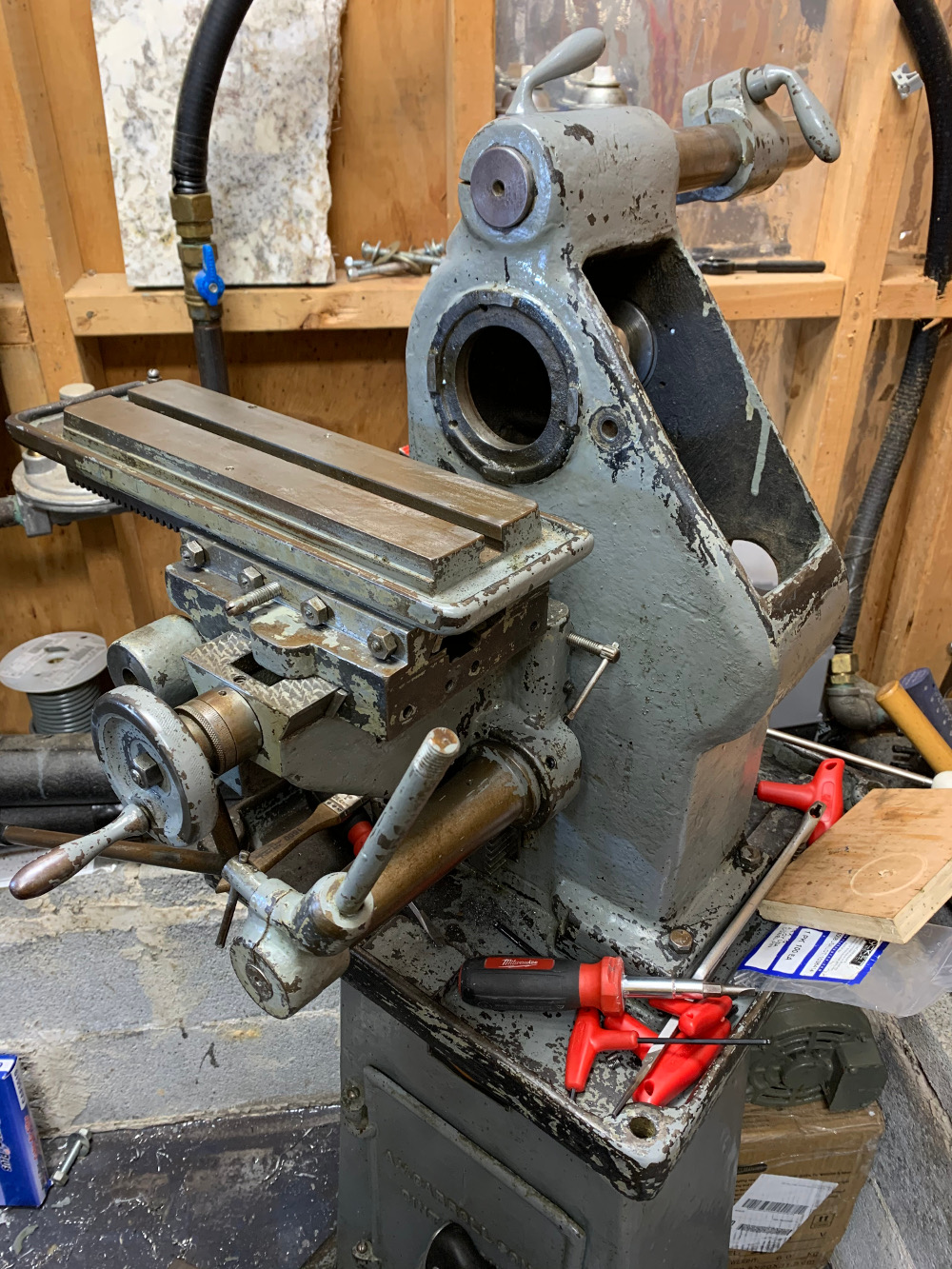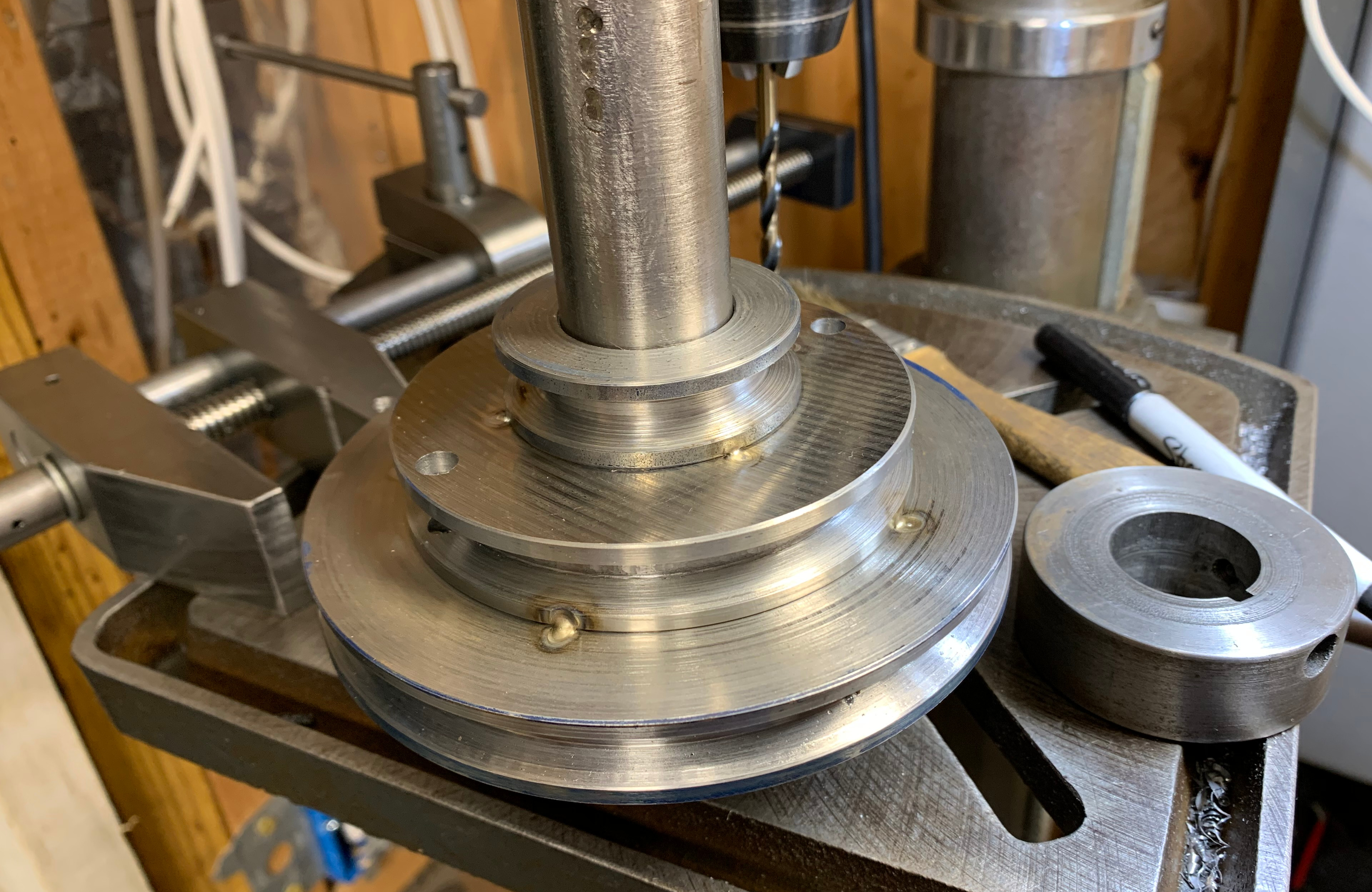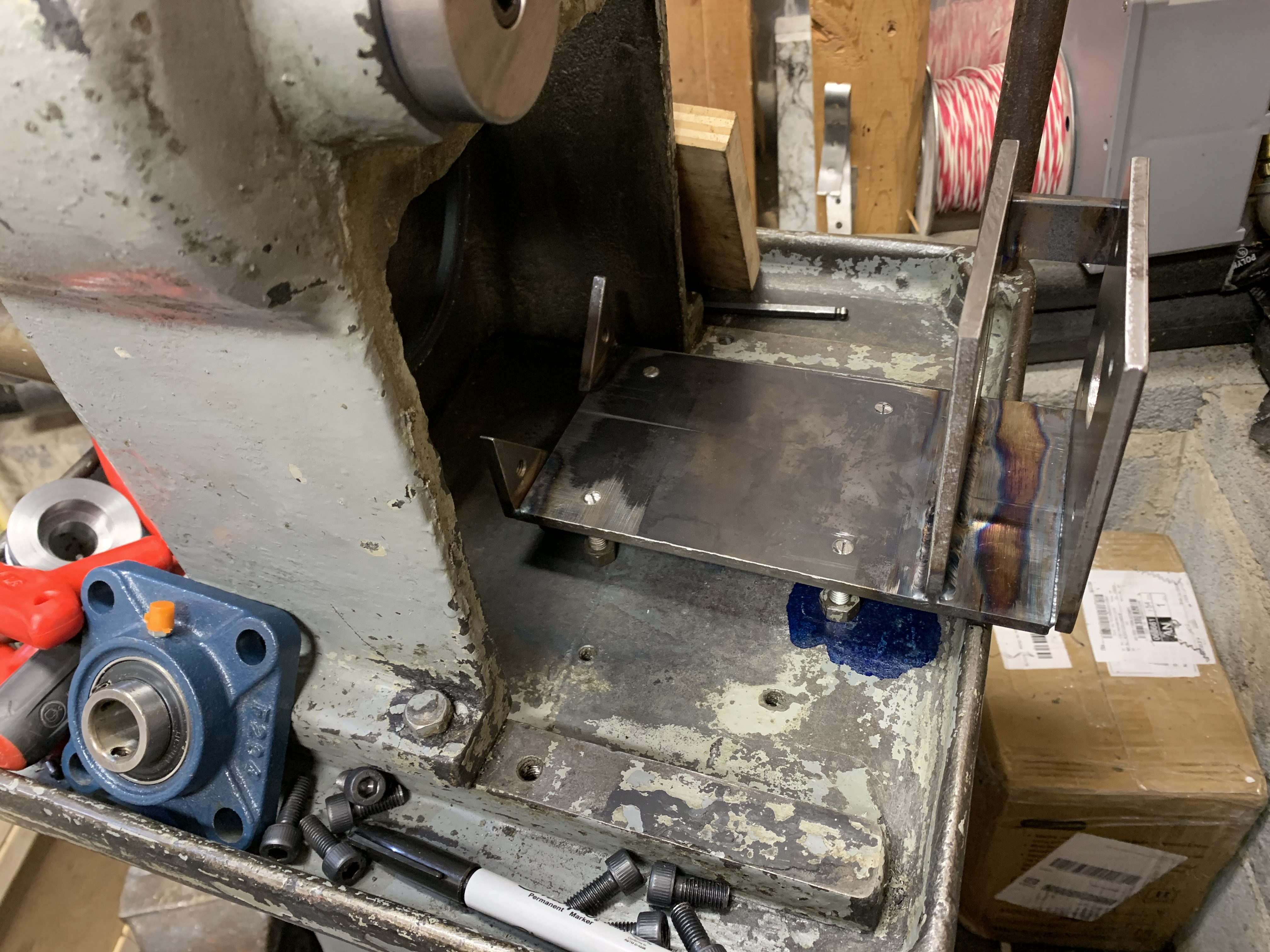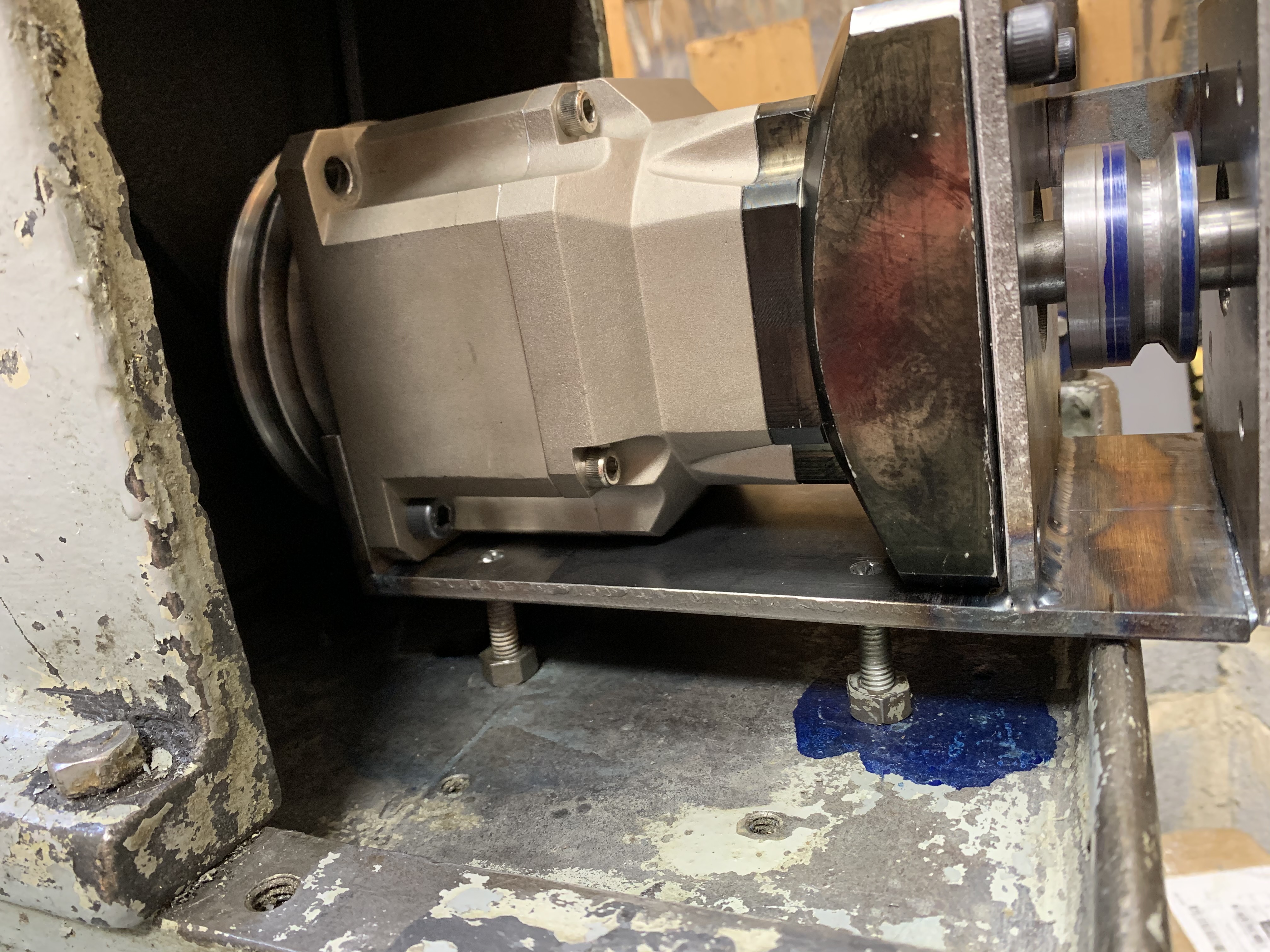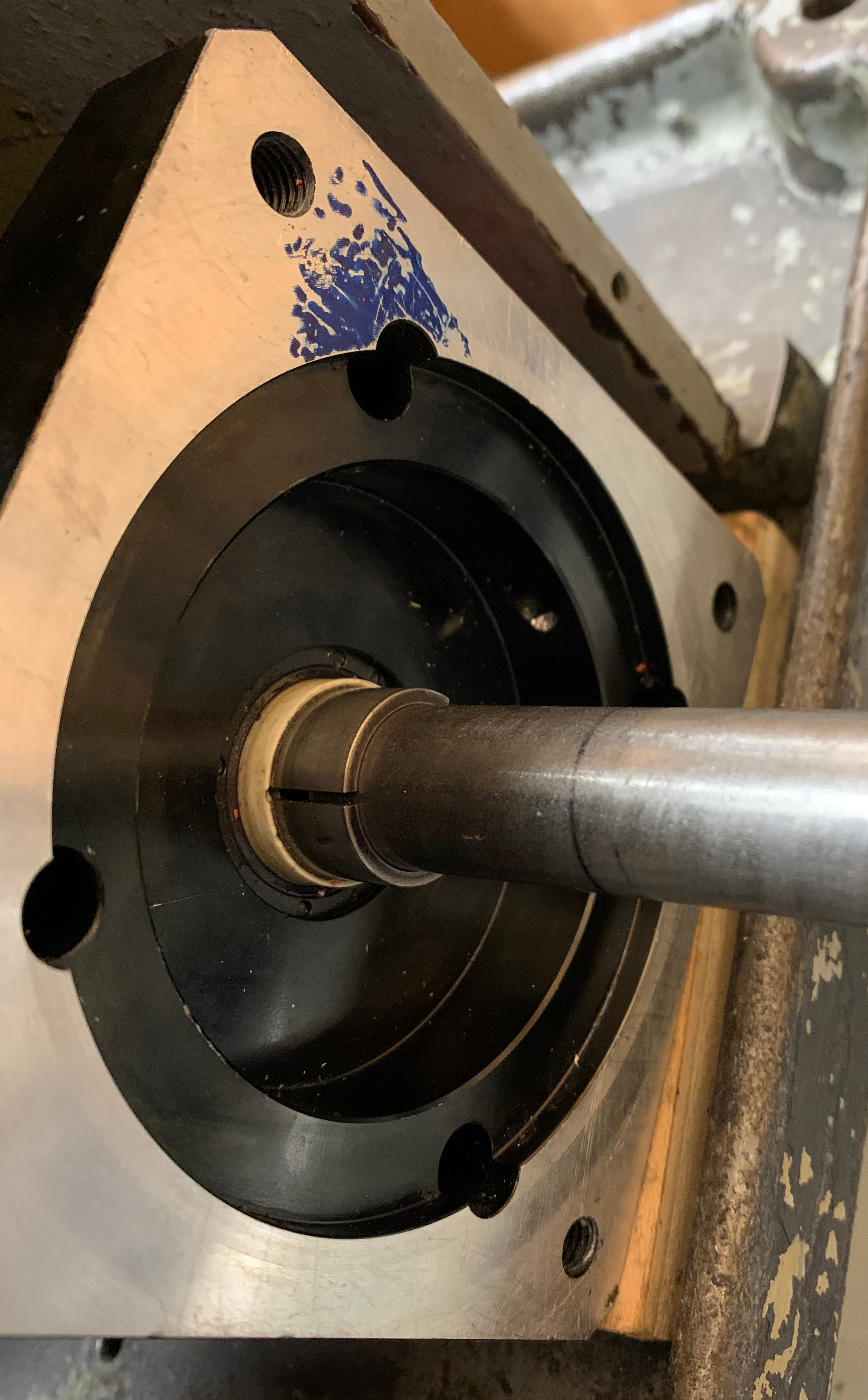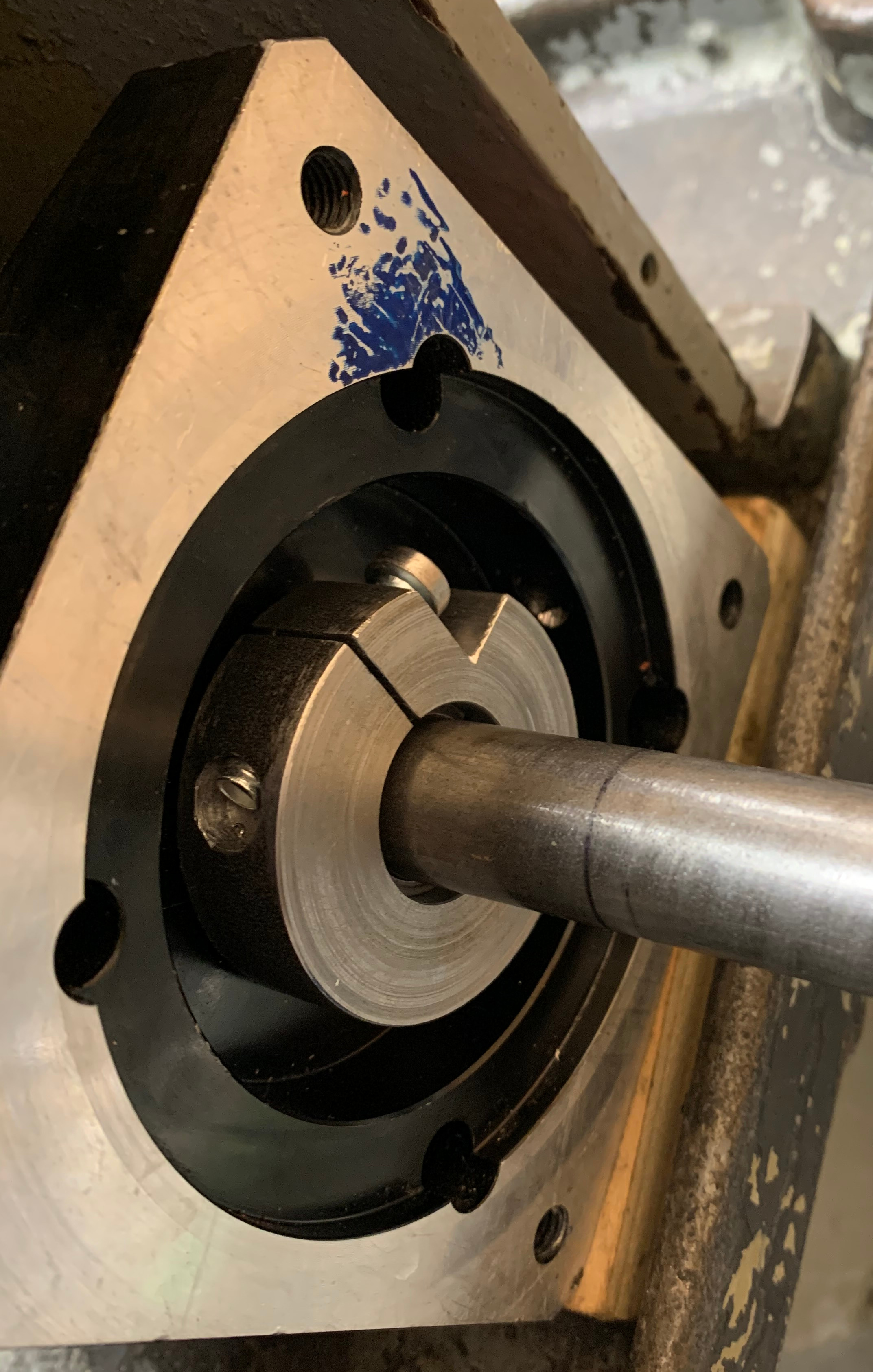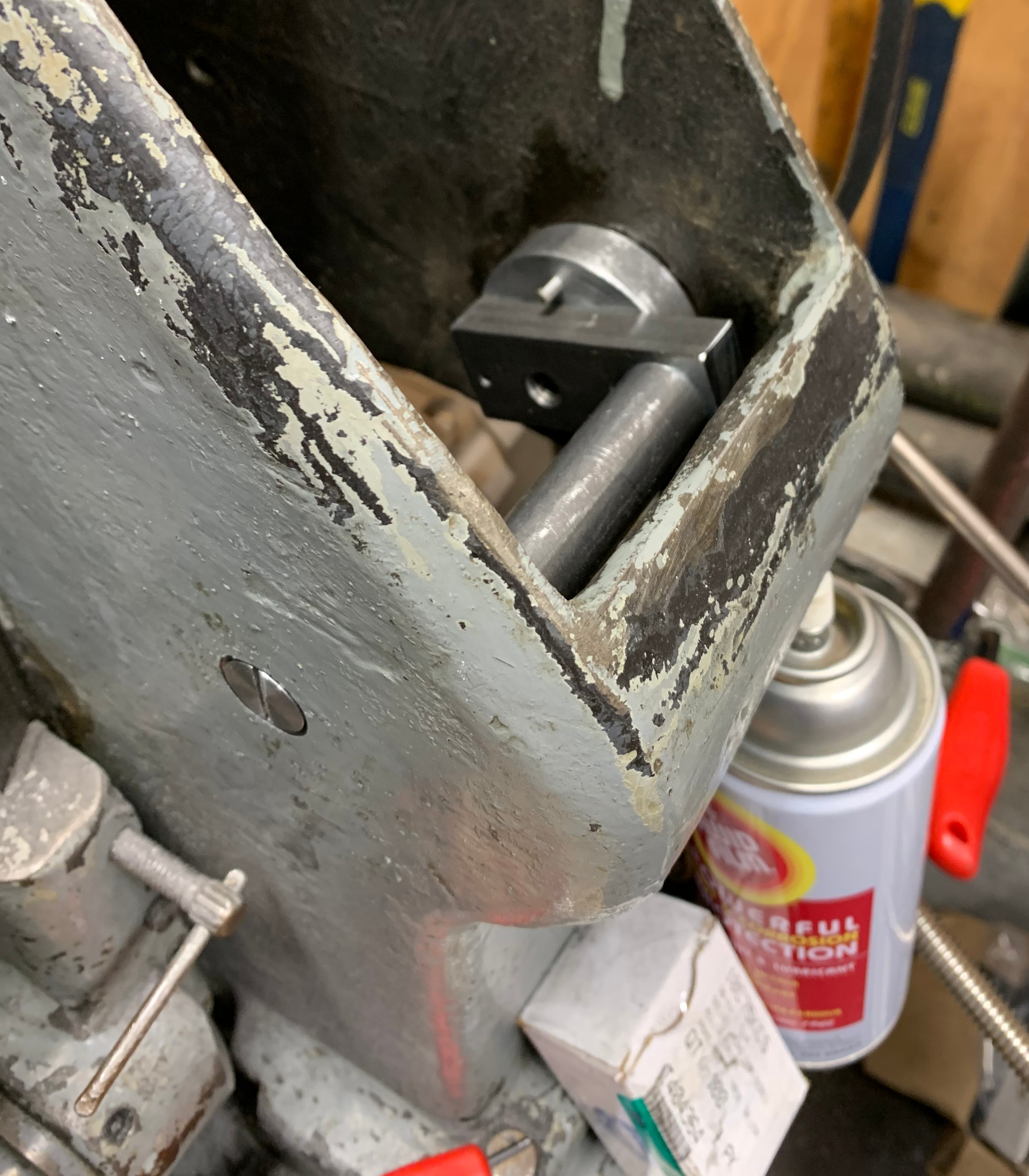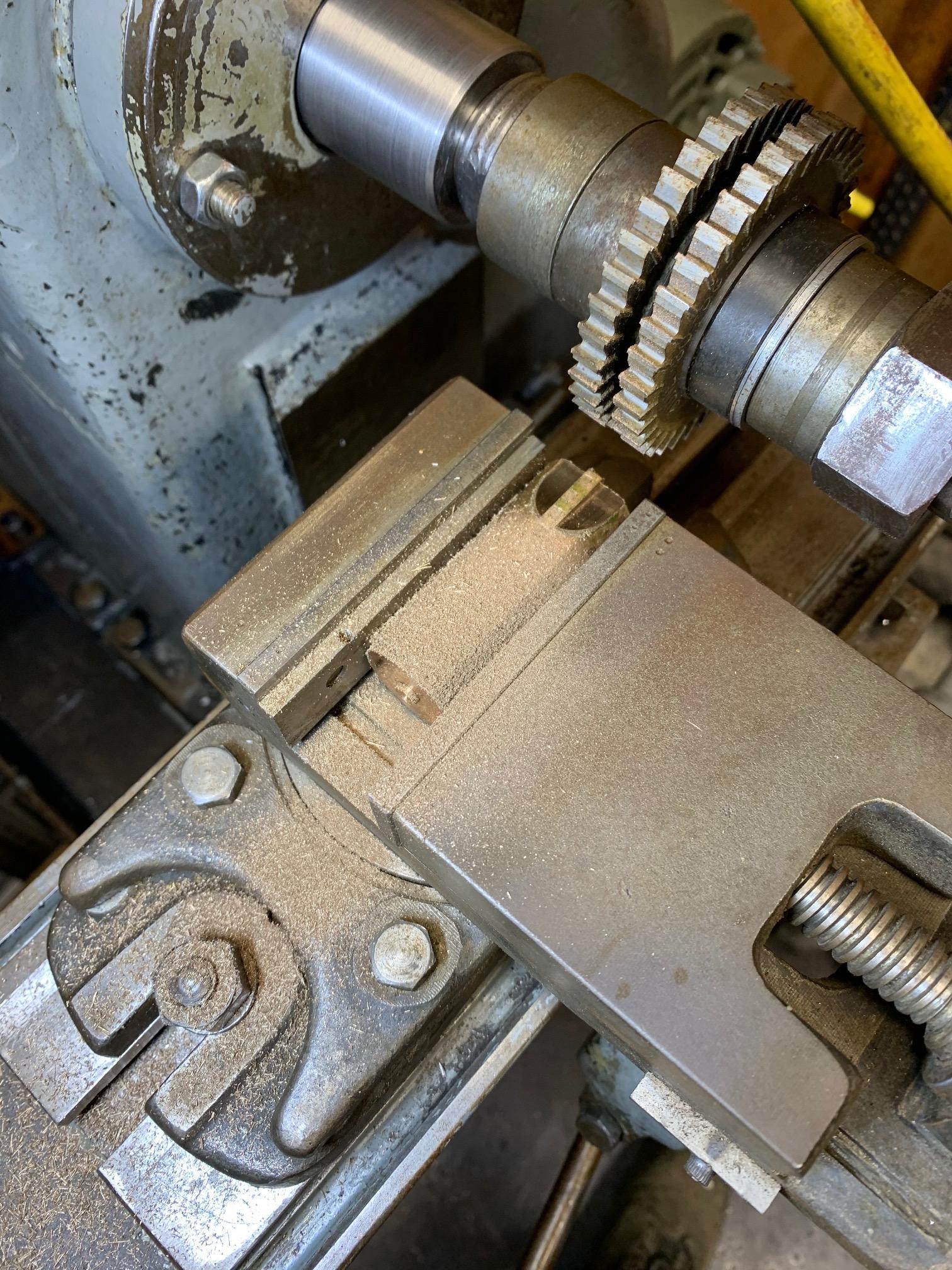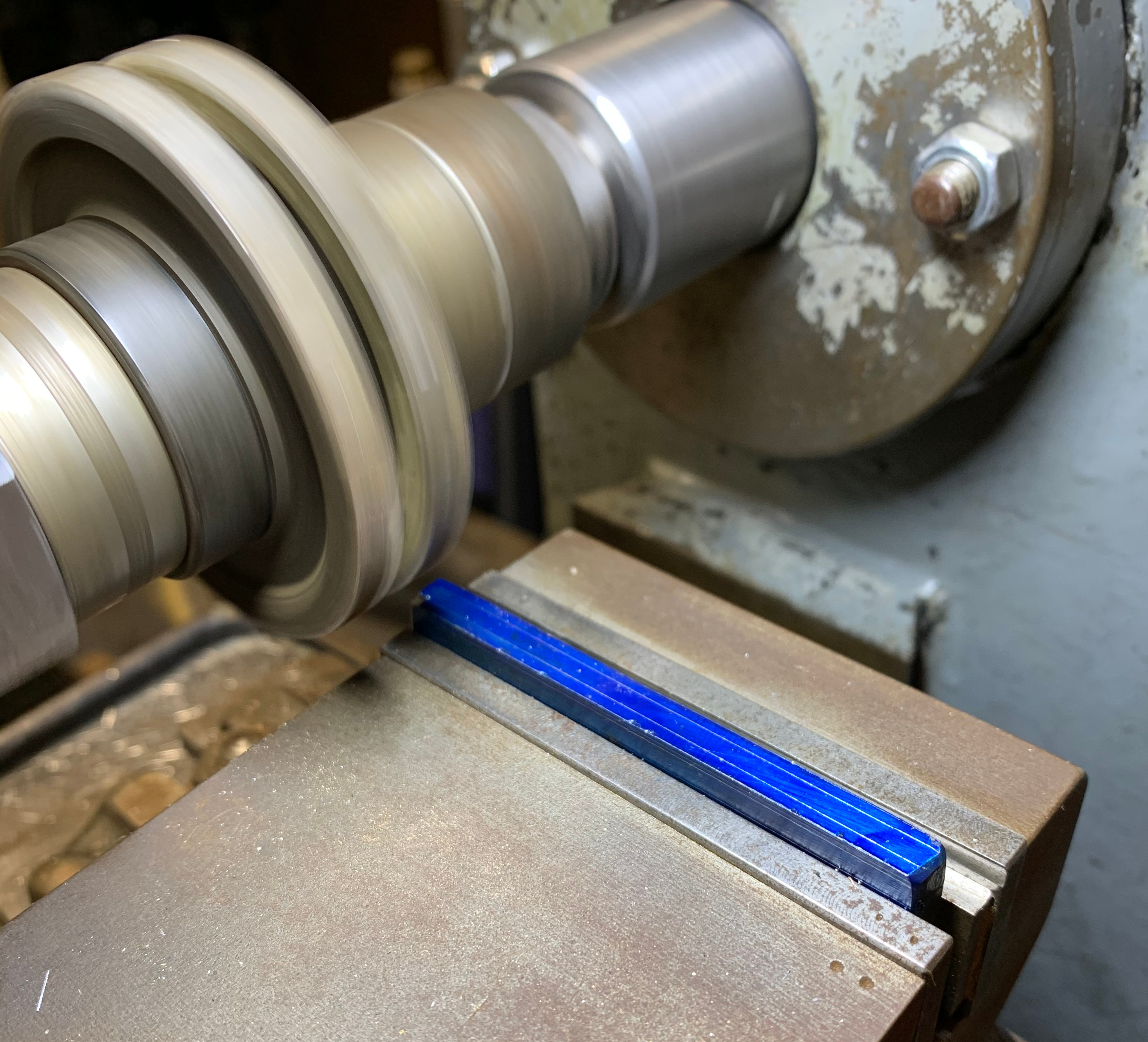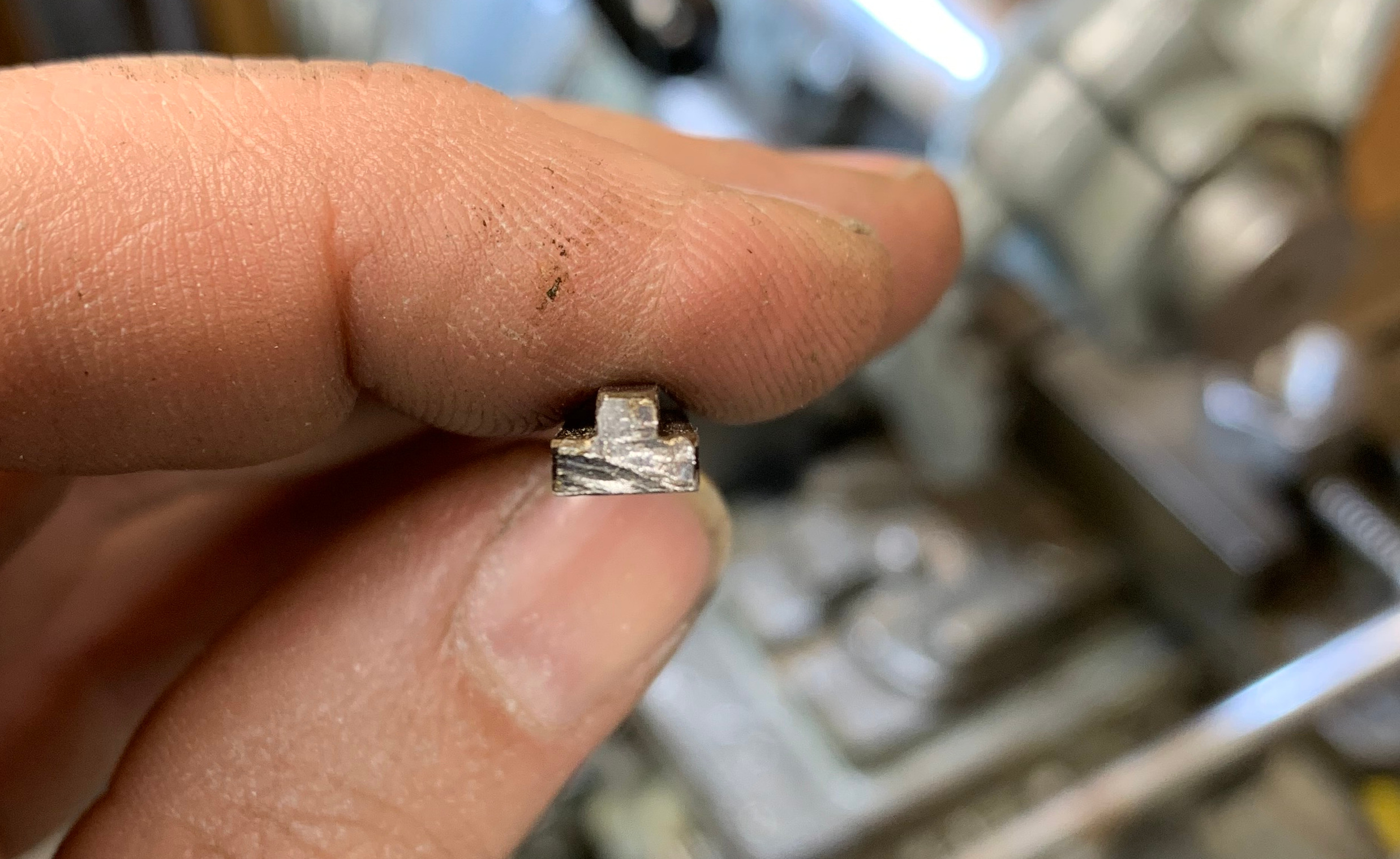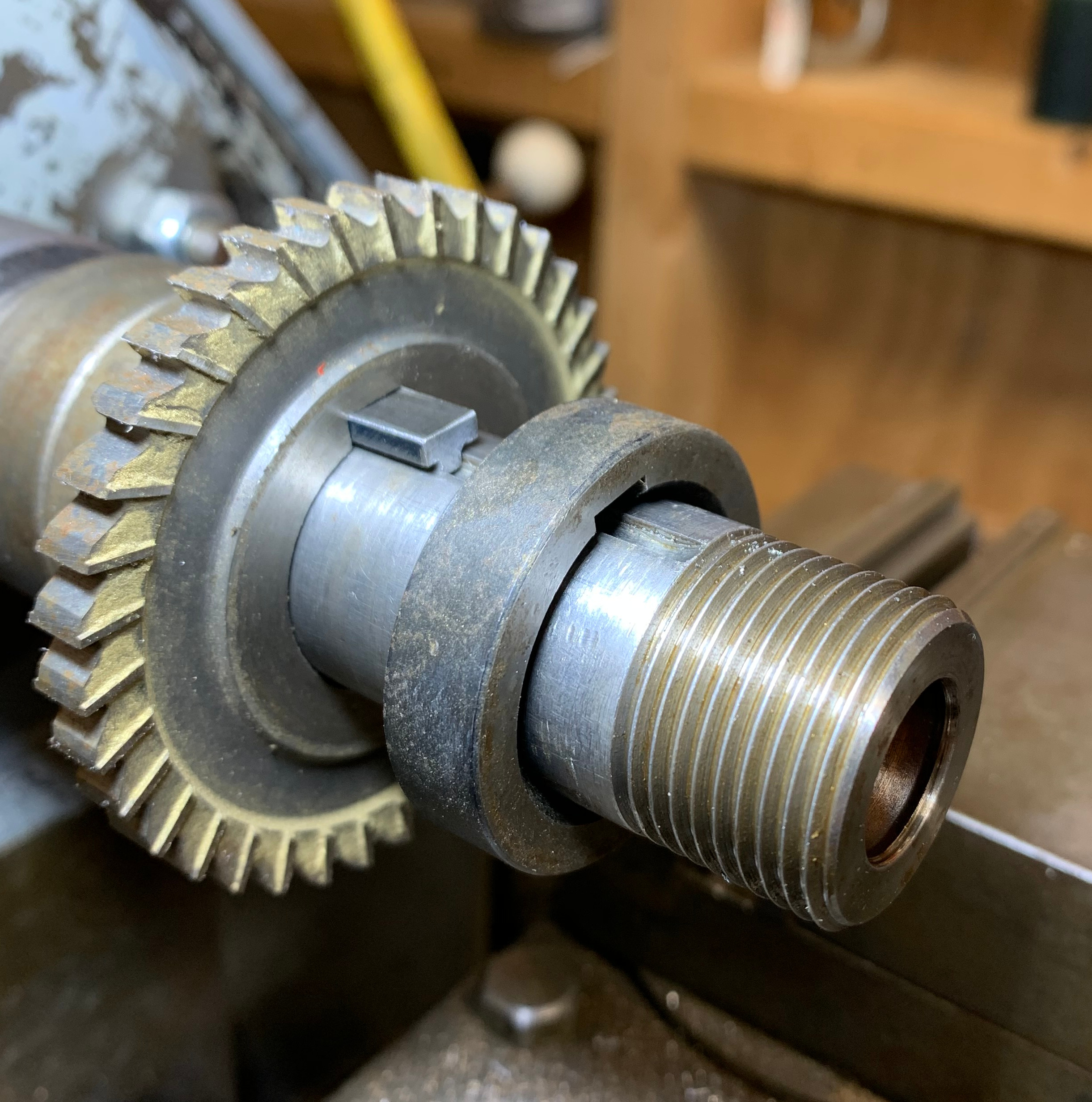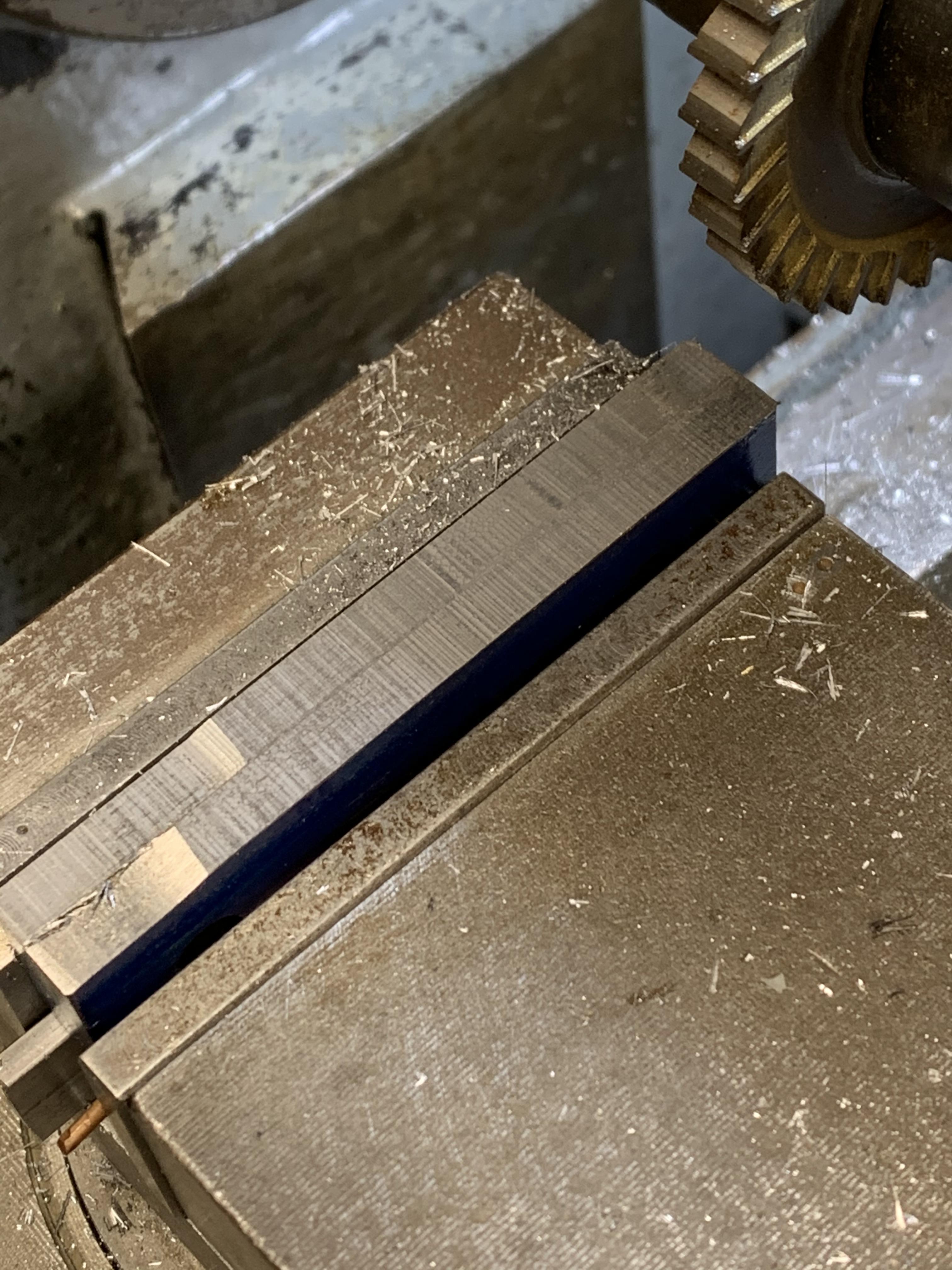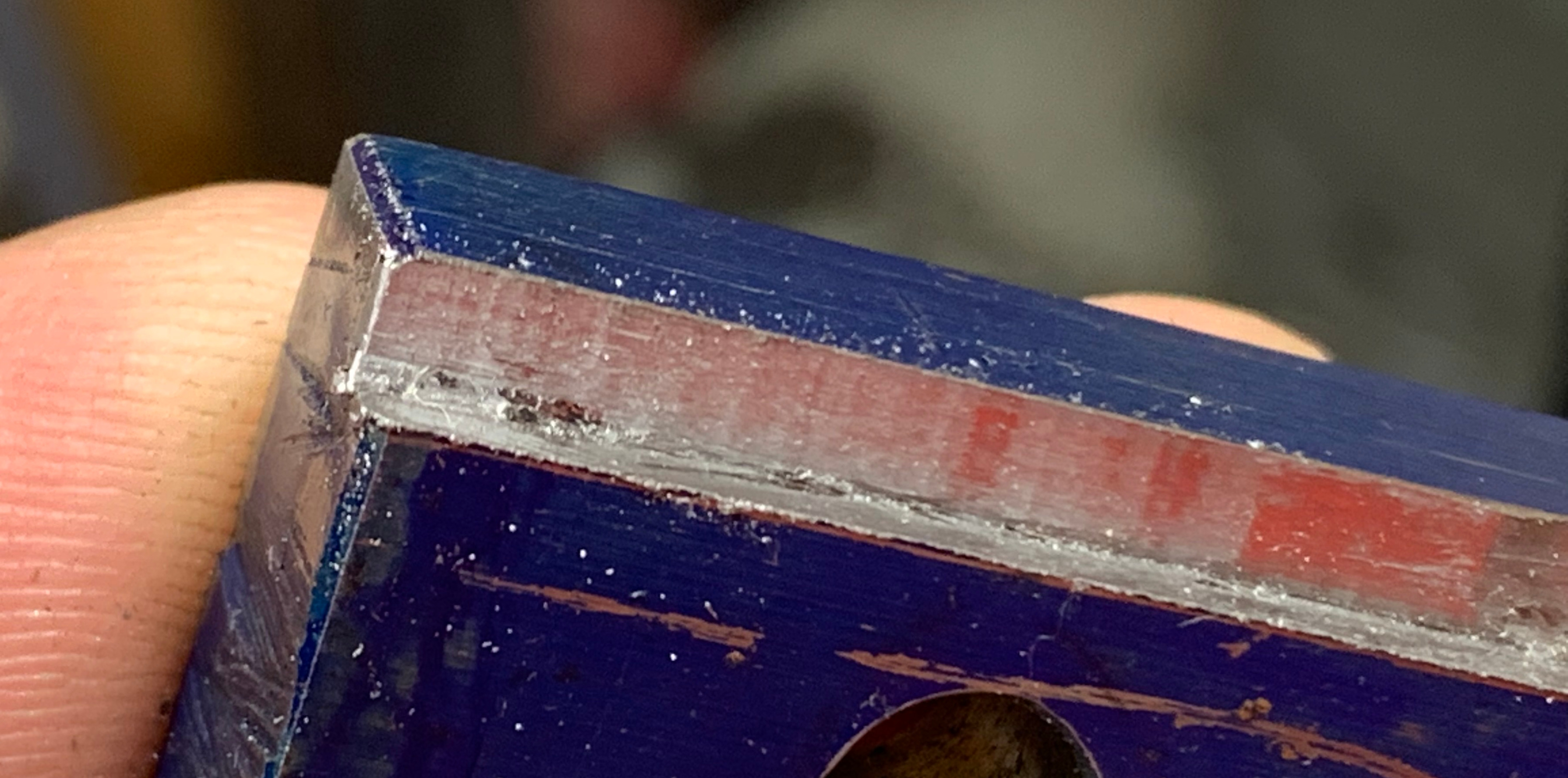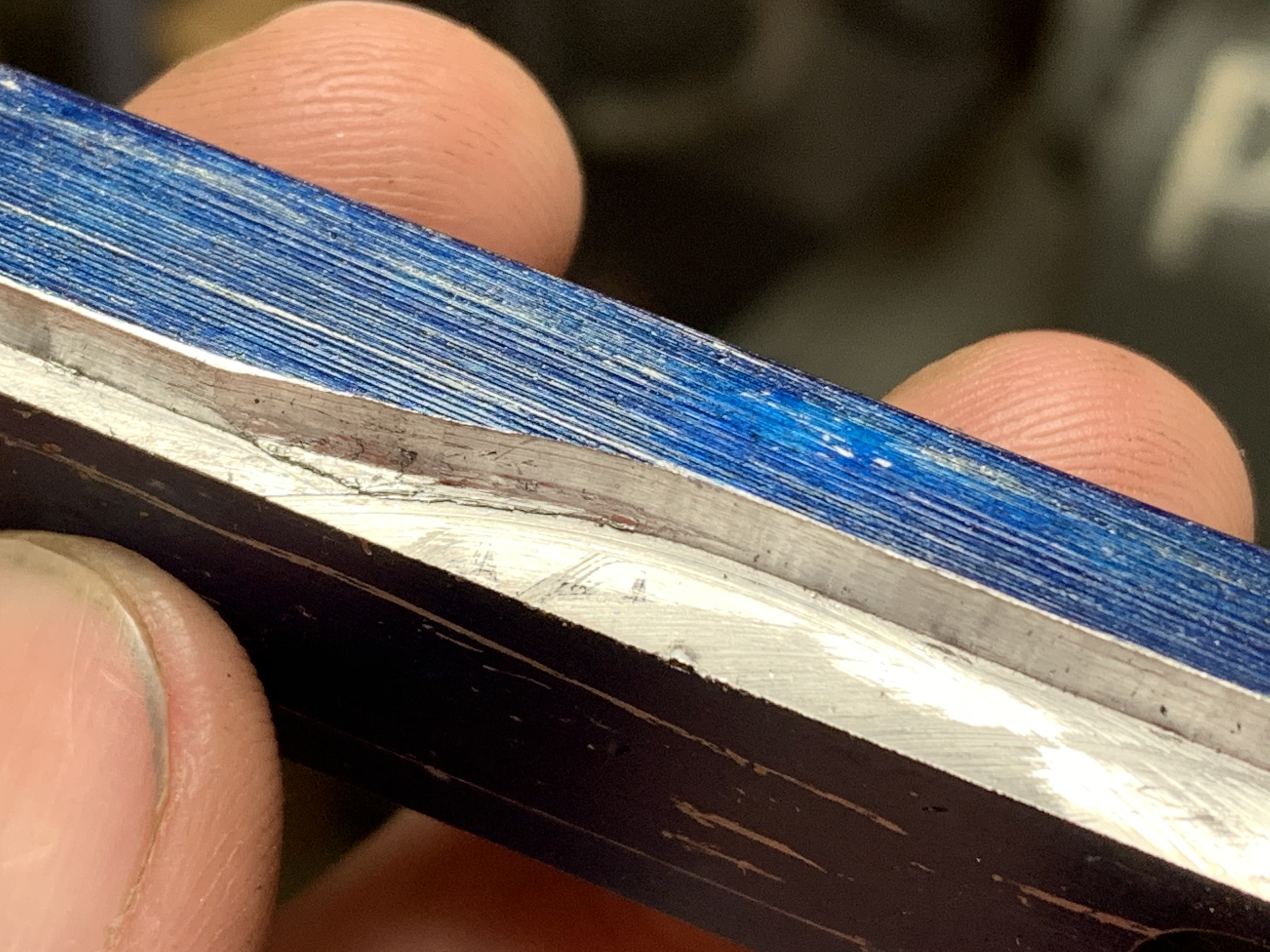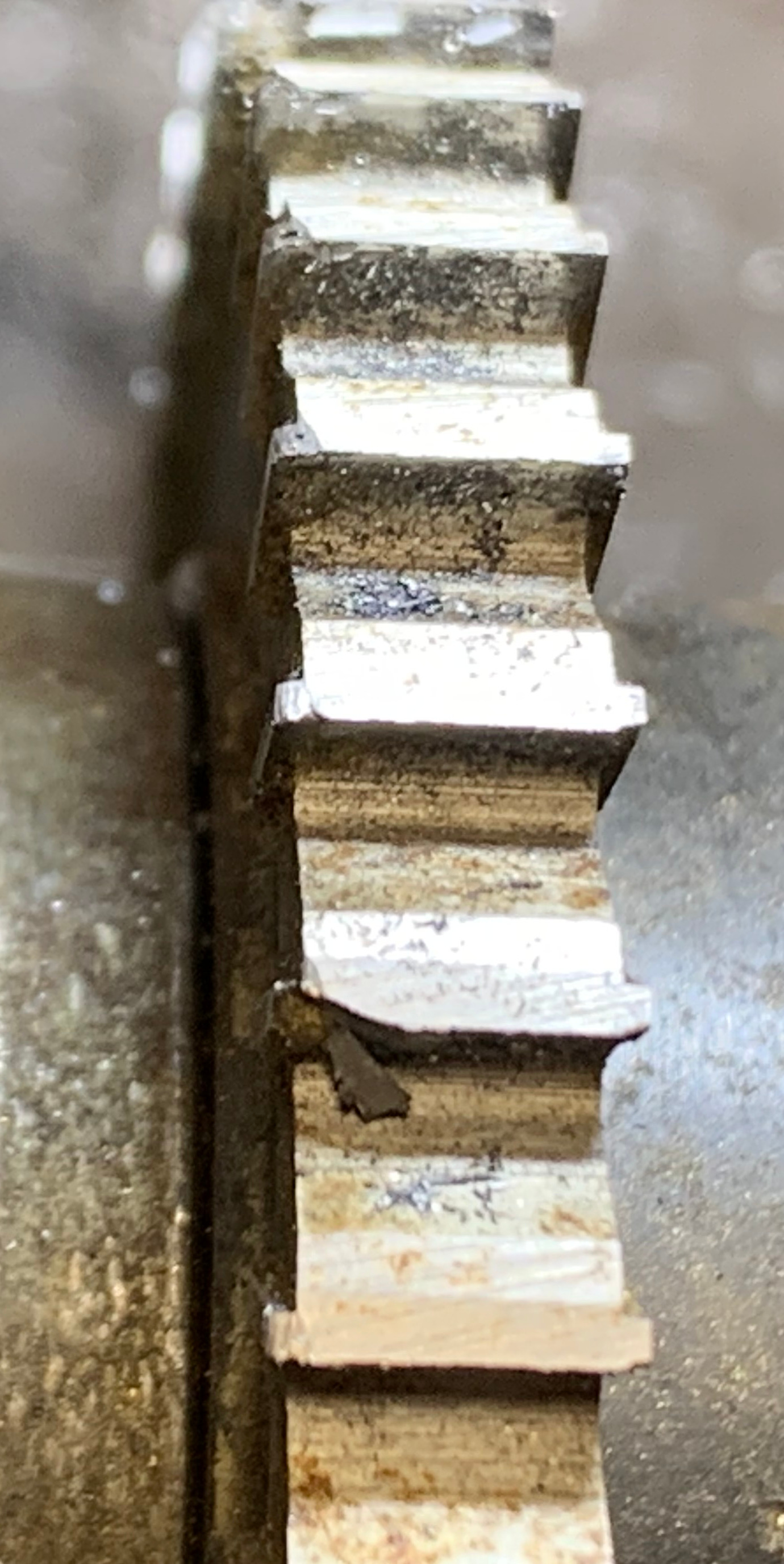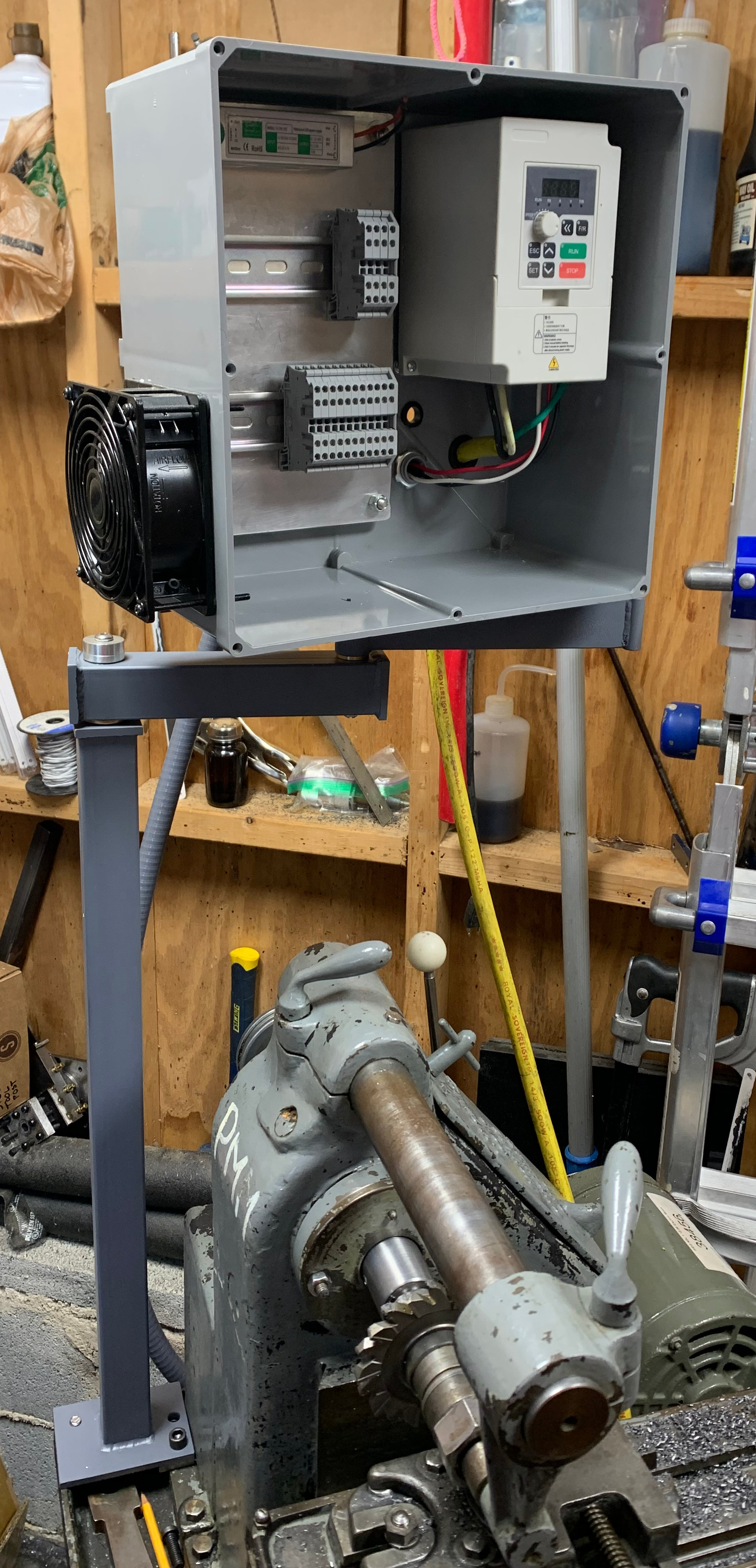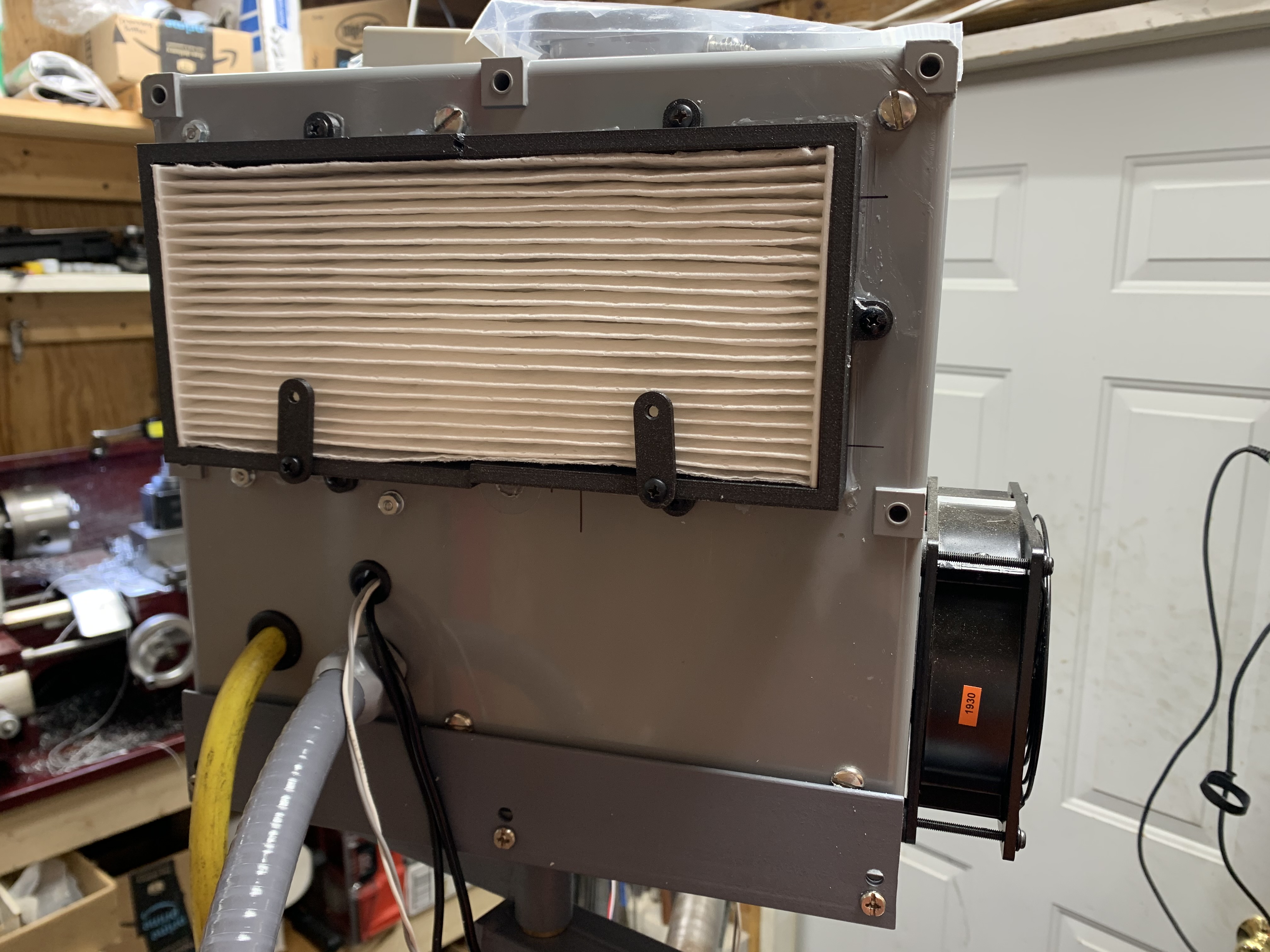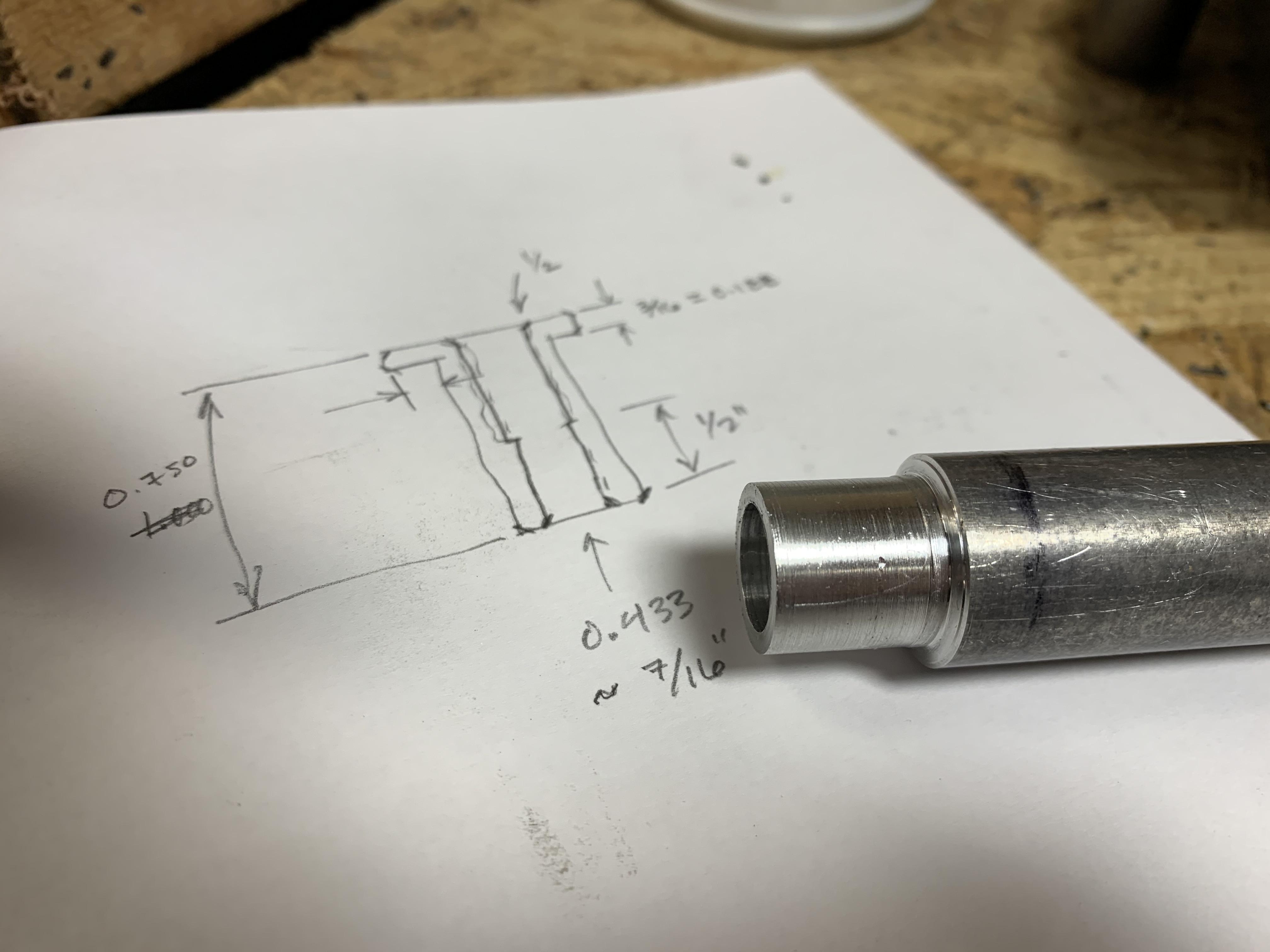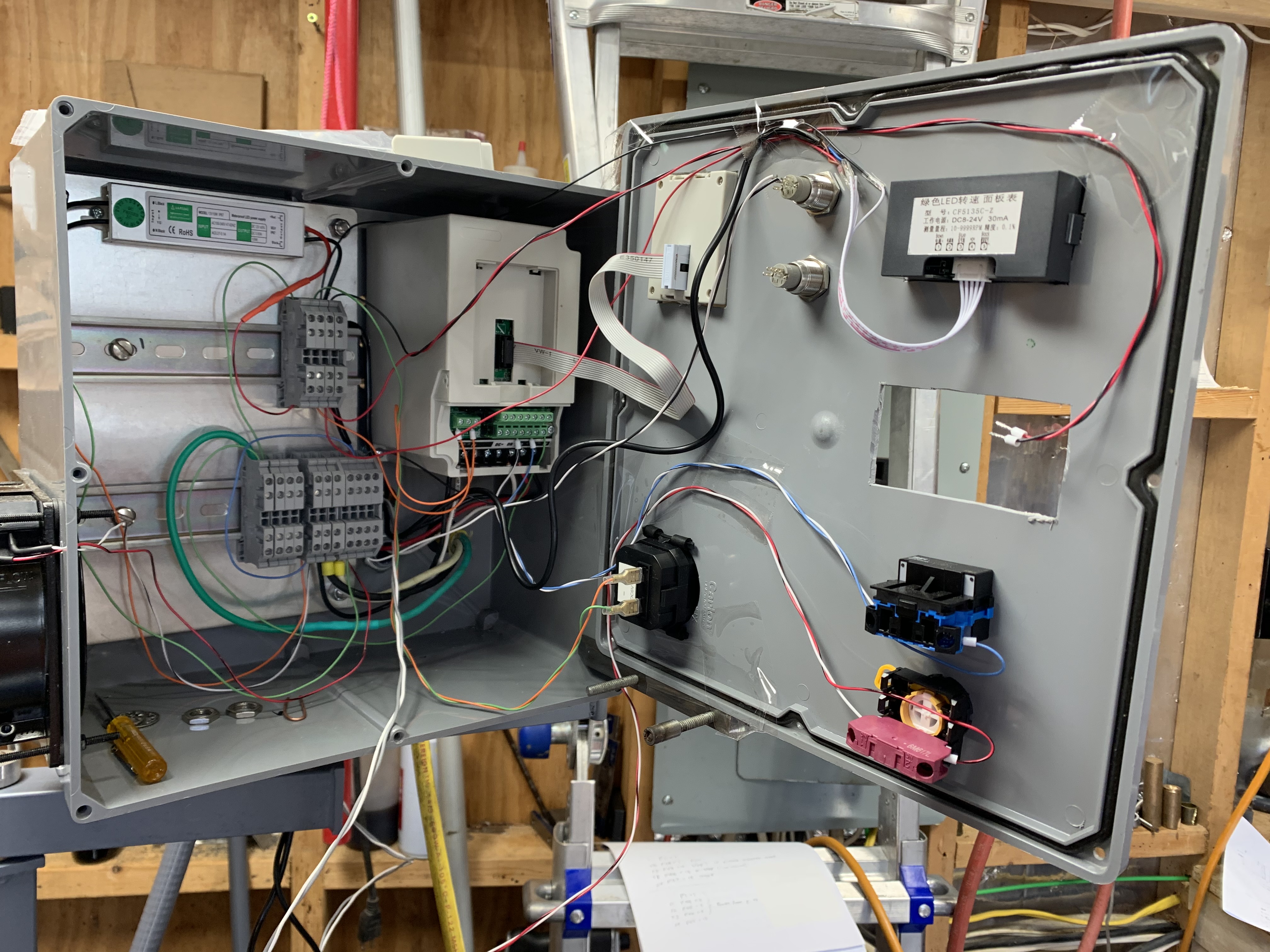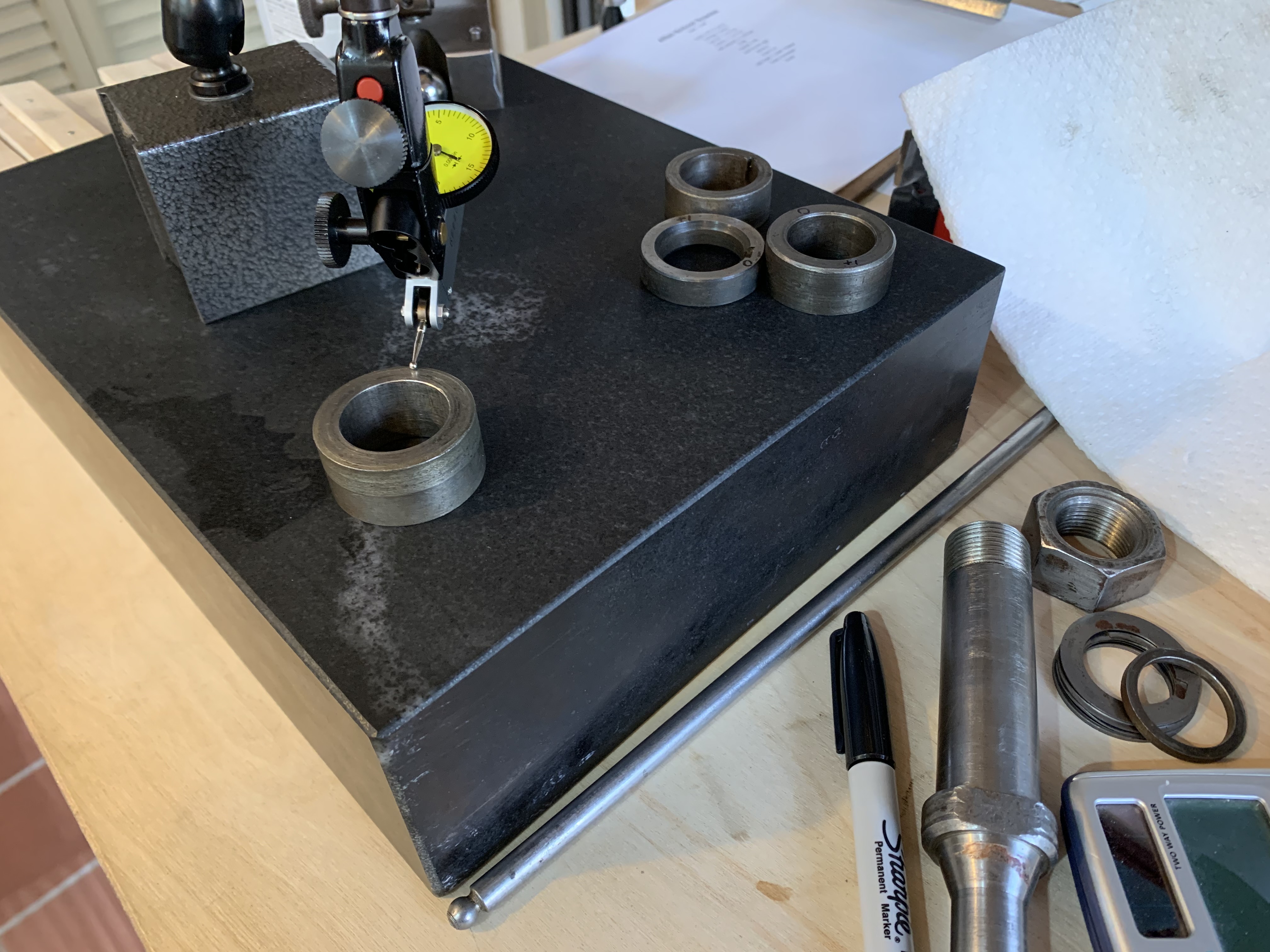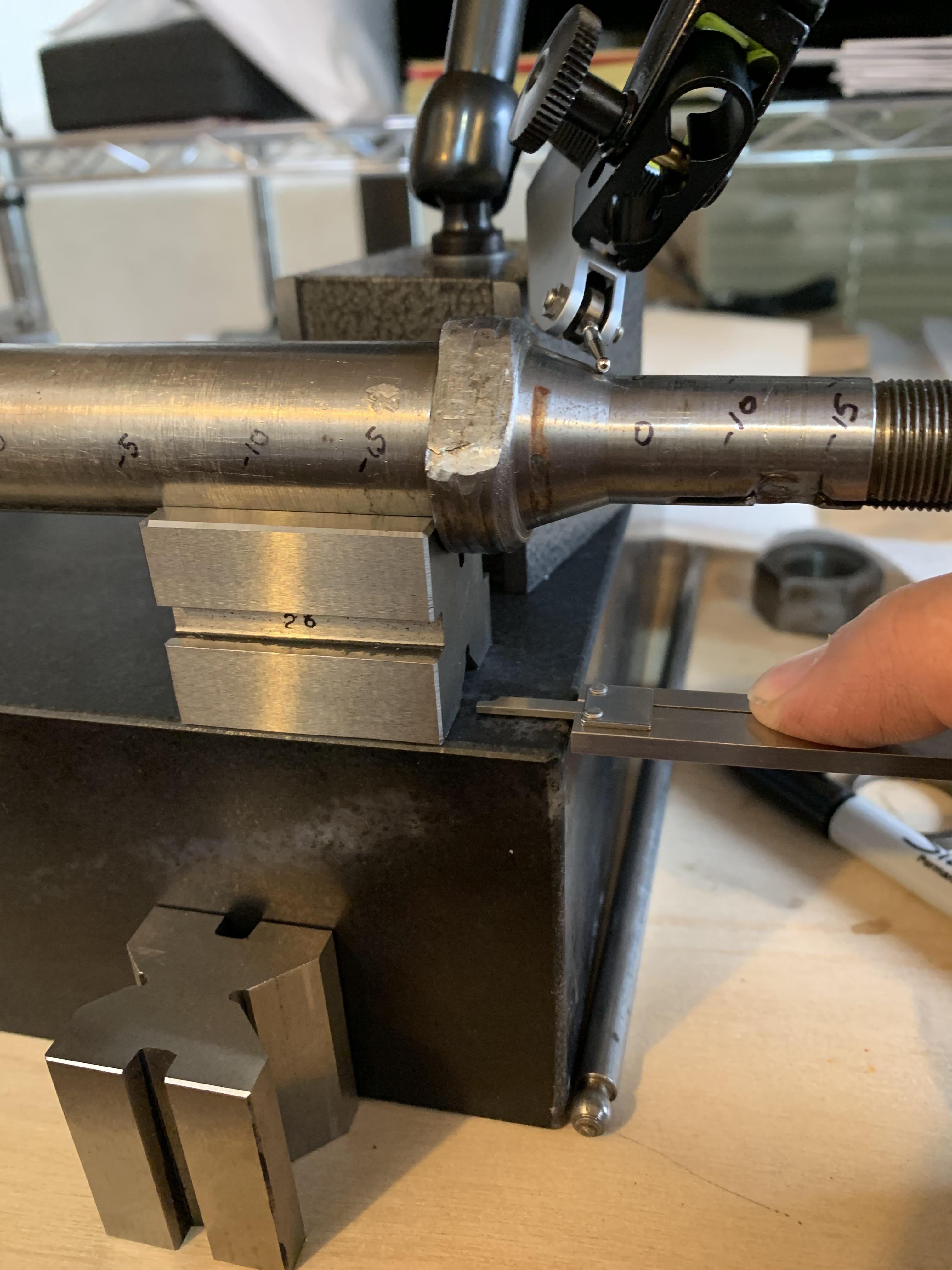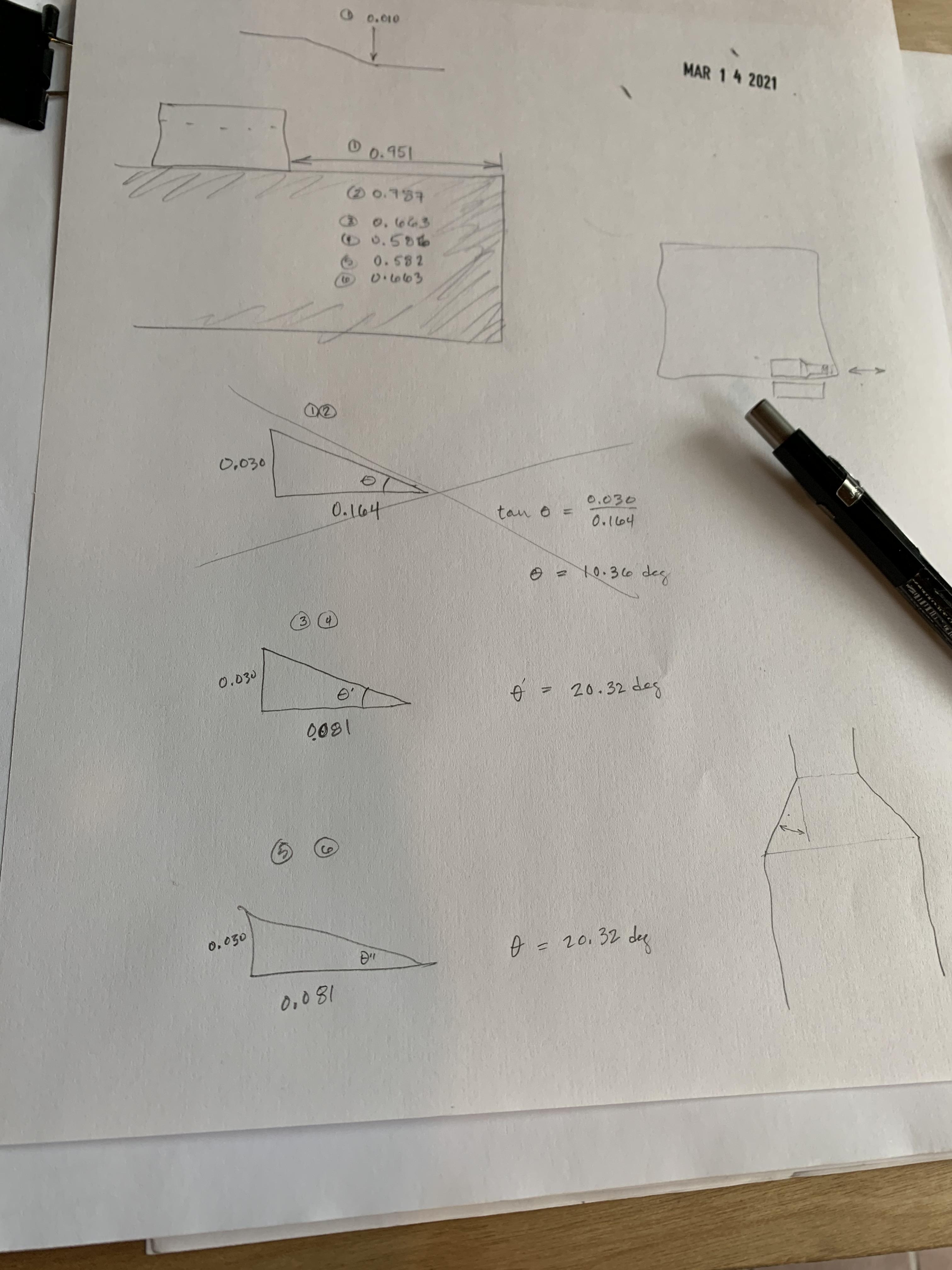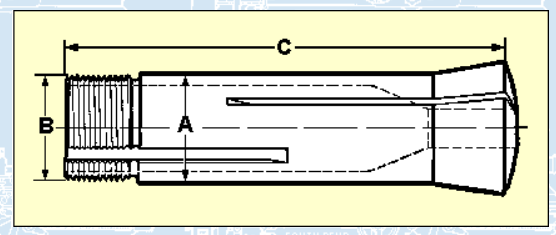- Joined
- May 3, 2020
- Messages
- 229
The pulleys with 1.125" ID wouldn't fit on the jaws of my chuck. Was thinking of making a mandrel. Instead, I turned down the jaws of the chuck about 0.010". I know, it's terrible practice and just shouldn't be done but it saved me so much time. The jaws were reasonably hard so I turned the chuck by hand and used a brazed carbide cutter.
The pulleys are bored and the V is cut. Took forever. Probably 8 hours for the first 3, including all problems solved along the way. The second set and the idler triple pulley took more like 4 hours.
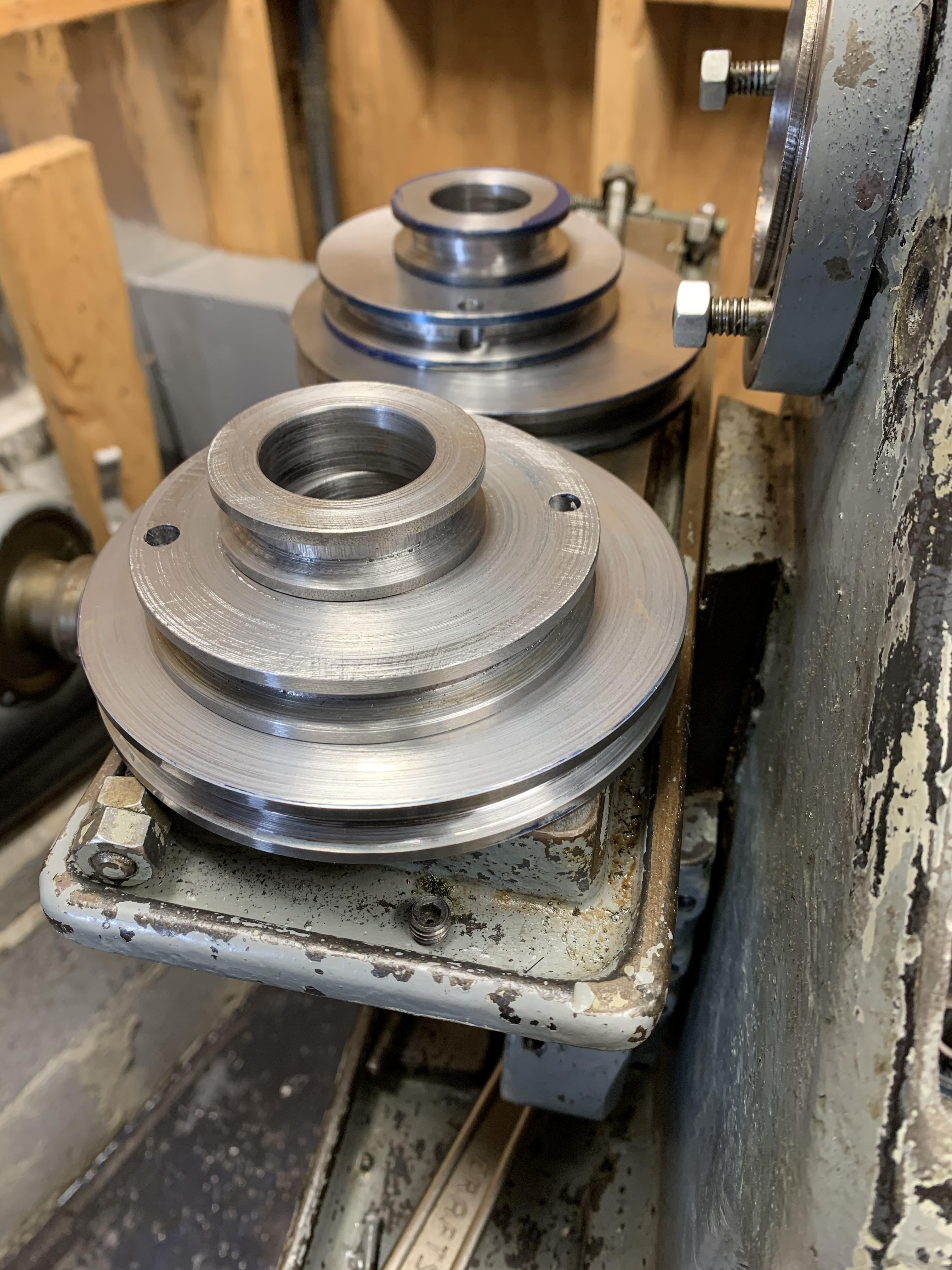
The set that go on the 15:1 planetary gearbox output shaft need a keyway. The set that go on the spindle also need a keyway but I have a trick up my sleeve. The front bearing of the spindle is covered in the back by a thick spacer . That spacer acts as a dust shield and... well, I don't know what it's so thick. But it does have a set screw and a Woodruff key, which will help me avoid cutting a keyway in the pulleys! The idea was to bolt the pulleys to the spacer. Here's the general arrangement, with the mill in the background. Everything sort-of lines up.
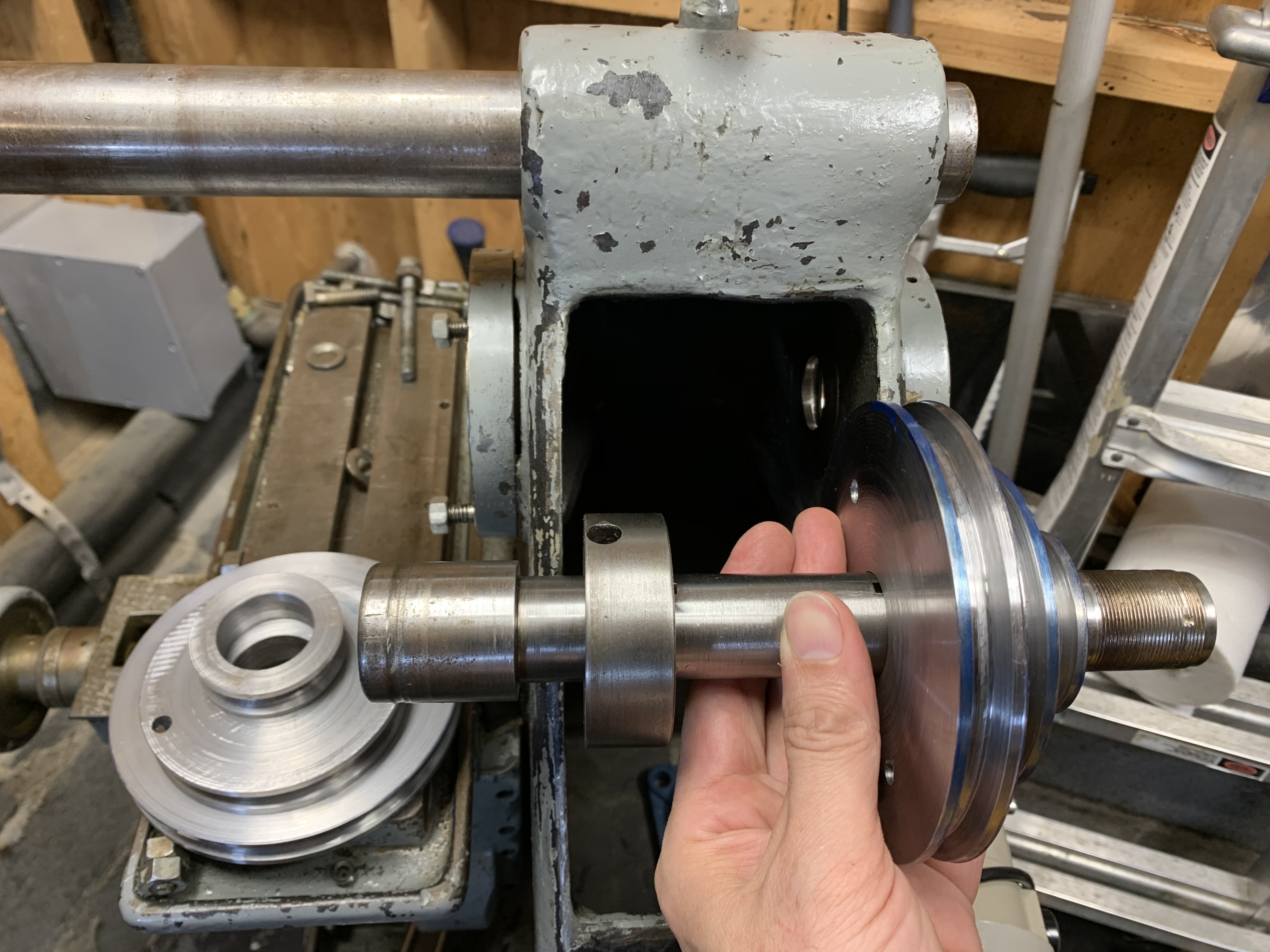
Here's the key I was talking about. But now that I'm writing it down, thinking about what others might advise, I'm not so sure this is a good idea... I'm thinking about how the pulleys could rotate relative to one another about clearance holes for machine screws. Maybe I'll still do it but make a set of shoulder screws. Or pins... 2 pins and a single machine screw. And I can choose the order of the pulleys. Probably would be best to counterbore the screws and that would be better in the large pulley. The small pulley, though, I may need to attach separately with smaller screws. Maybe countersunk flat-head machine screws. And pins. Ug, so many decisions. Or maybe I should cut a keyway and use the key at the other end of the spindle. Anyway, this is what that keyway looks like.
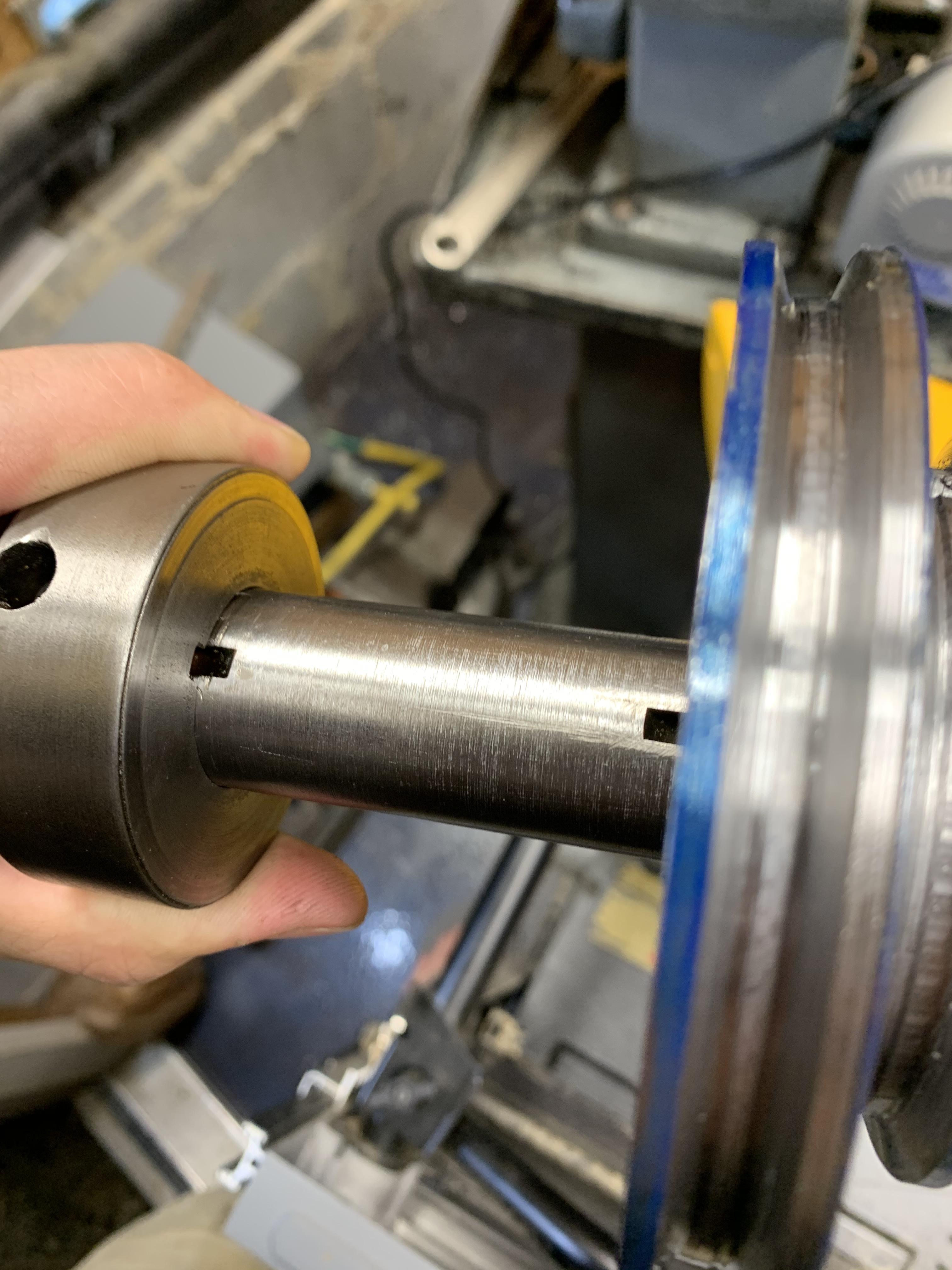
I won't be able to get away without cutting keyways in the pulleys that go on the transmission shaft. I found a few methods. But a broach and press. Buy a shaper. Buy a slotting attachment for the mill. But then I found this homemade lathe attachment. These mechanisms basically mount on the cross slide and have a lever to manually cut the groove.
Here's a clever one that uses the compound as a shaper ram. Again, it has a manual lever to advance the cutter.
http://madscientisthut.com/wordpres...haping-keyway-attachment-for-atlas-618-lathe/
Then I thought I might just mount the cutter in a tool holder and use a lever against the cross-bracing to advance the cross-slide with enough force to cut the groove. The handwheel will spin wildly but I don't think it will be a hindrance. The trick will be to keep the overhang of the slotting tool as minimal as possible. And enough rake on the cutter that it's not trying to avoid the cut. The pulley is "low carbon steel" which I think is cold rolled. It machines OK. McMaster says it's ASTM A108 which includes re-sulfered more machinable grads but also plain sticky carbon steels. So a little rake is probably OK. And it can probably just be a HSS tool blank... Yeah, well, it sounds like good theory, right?
I also worked on the idler pulley. It needs to be bored and recesses cut for bearings. I think I've worked out a system for tensioning the belts with an over-center type linkage that is easily adjusted.
The pulleys are bored and the V is cut. Took forever. Probably 8 hours for the first 3, including all problems solved along the way. The second set and the idler triple pulley took more like 4 hours.

The set that go on the 15:1 planetary gearbox output shaft need a keyway. The set that go on the spindle also need a keyway but I have a trick up my sleeve. The front bearing of the spindle is covered in the back by a thick spacer . That spacer acts as a dust shield and... well, I don't know what it's so thick. But it does have a set screw and a Woodruff key, which will help me avoid cutting a keyway in the pulleys! The idea was to bolt the pulleys to the spacer. Here's the general arrangement, with the mill in the background. Everything sort-of lines up.

Here's the key I was talking about. But now that I'm writing it down, thinking about what others might advise, I'm not so sure this is a good idea... I'm thinking about how the pulleys could rotate relative to one another about clearance holes for machine screws. Maybe I'll still do it but make a set of shoulder screws. Or pins... 2 pins and a single machine screw. And I can choose the order of the pulleys. Probably would be best to counterbore the screws and that would be better in the large pulley. The small pulley, though, I may need to attach separately with smaller screws. Maybe countersunk flat-head machine screws. And pins. Ug, so many decisions. Or maybe I should cut a keyway and use the key at the other end of the spindle. Anyway, this is what that keyway looks like.

I won't be able to get away without cutting keyways in the pulleys that go on the transmission shaft. I found a few methods. But a broach and press. Buy a shaper. Buy a slotting attachment for the mill. But then I found this homemade lathe attachment. These mechanisms basically mount on the cross slide and have a lever to manually cut the groove.
Here's a clever one that uses the compound as a shaper ram. Again, it has a manual lever to advance the cutter.
http://madscientisthut.com/wordpres...haping-keyway-attachment-for-atlas-618-lathe/
Then I thought I might just mount the cutter in a tool holder and use a lever against the cross-bracing to advance the cross-slide with enough force to cut the groove. The handwheel will spin wildly but I don't think it will be a hindrance. The trick will be to keep the overhang of the slotting tool as minimal as possible. And enough rake on the cutter that it's not trying to avoid the cut. The pulley is "low carbon steel" which I think is cold rolled. It machines OK. McMaster says it's ASTM A108 which includes re-sulfered more machinable grads but also plain sticky carbon steels. So a little rake is probably OK. And it can probably just be a HSS tool blank... Yeah, well, it sounds like good theory, right?
I also worked on the idler pulley. It needs to be bored and recesses cut for bearings. I think I've worked out a system for tensioning the belts with an over-center type linkage that is easily adjusted.
Last edited:


